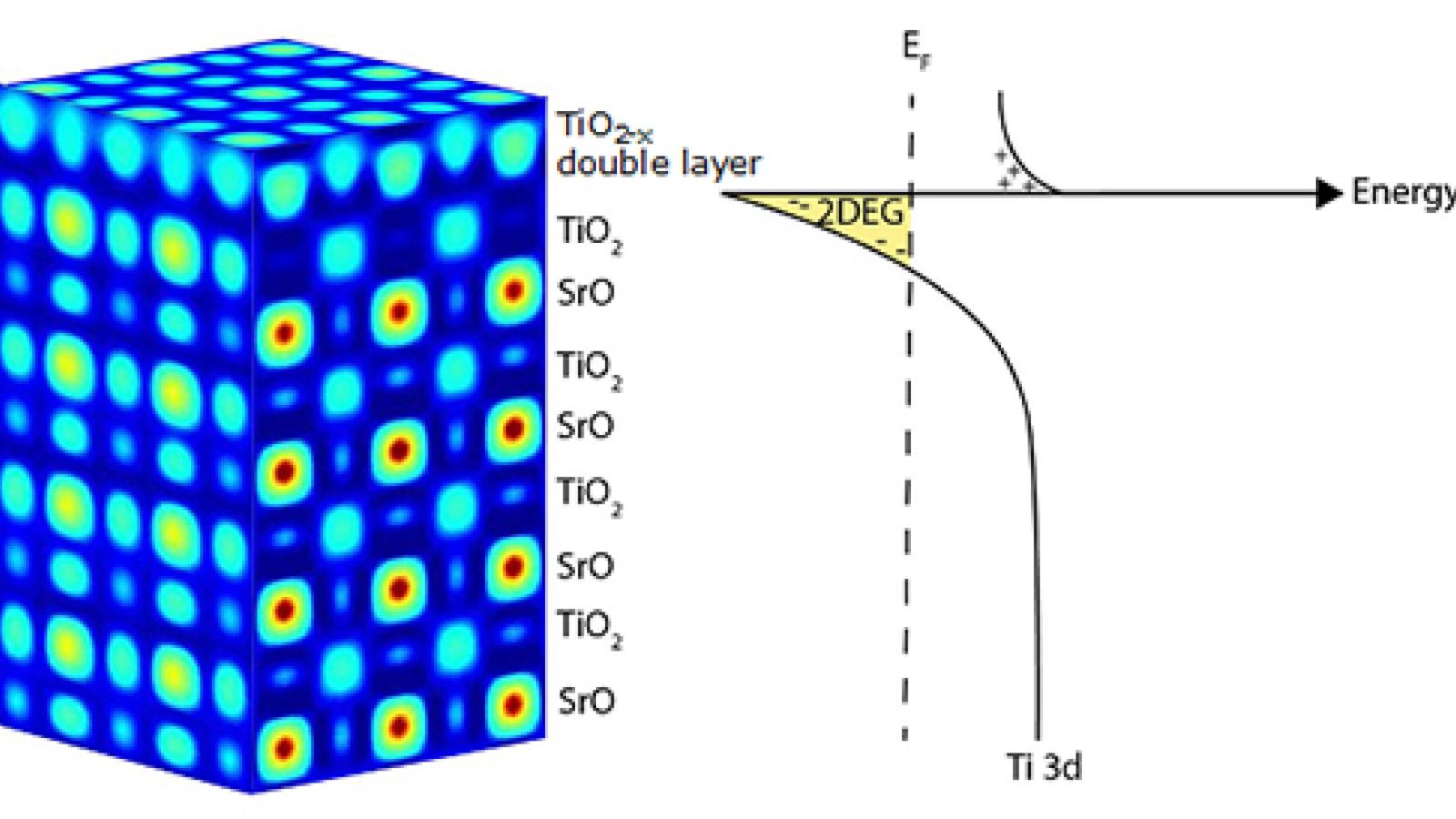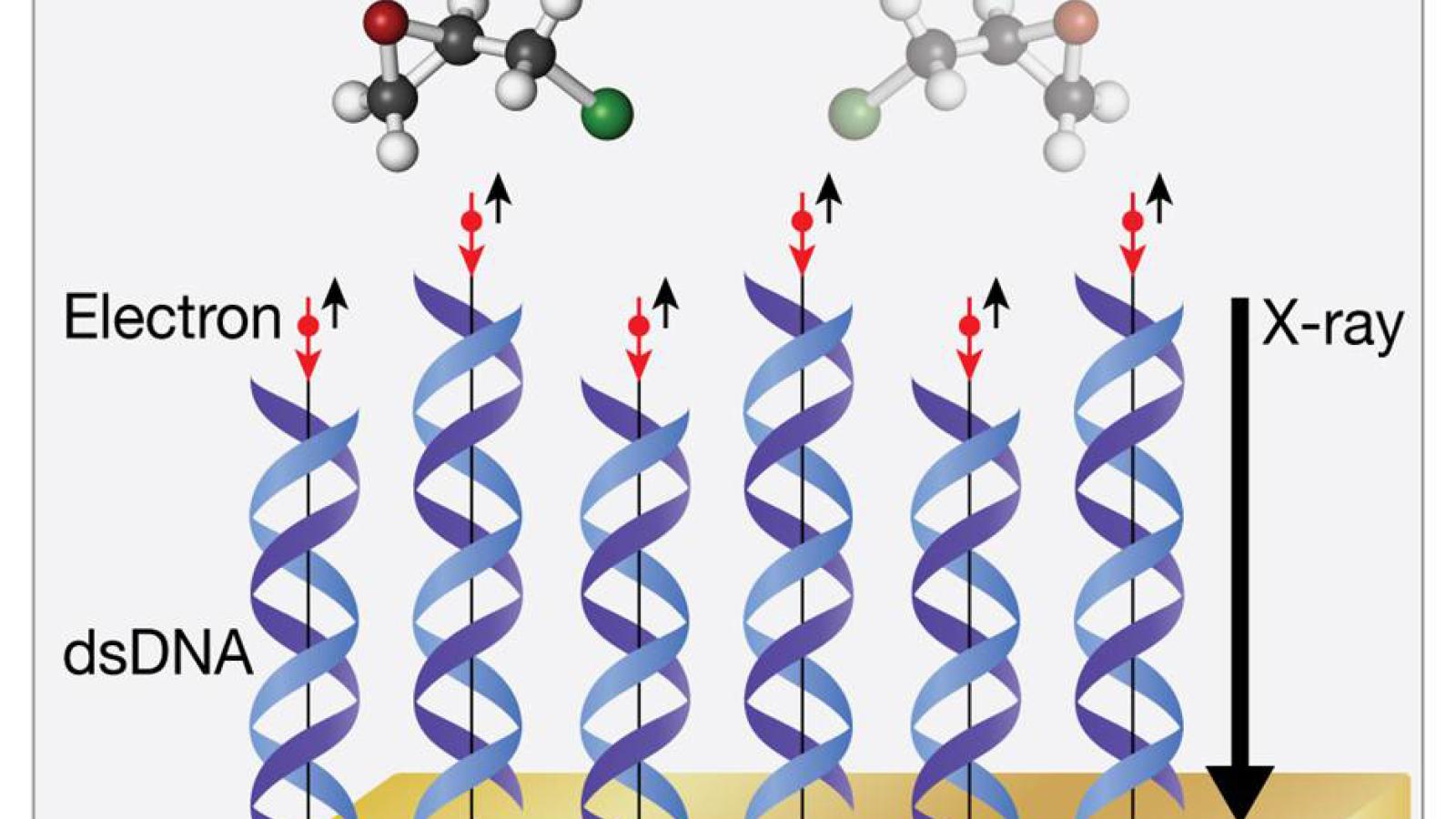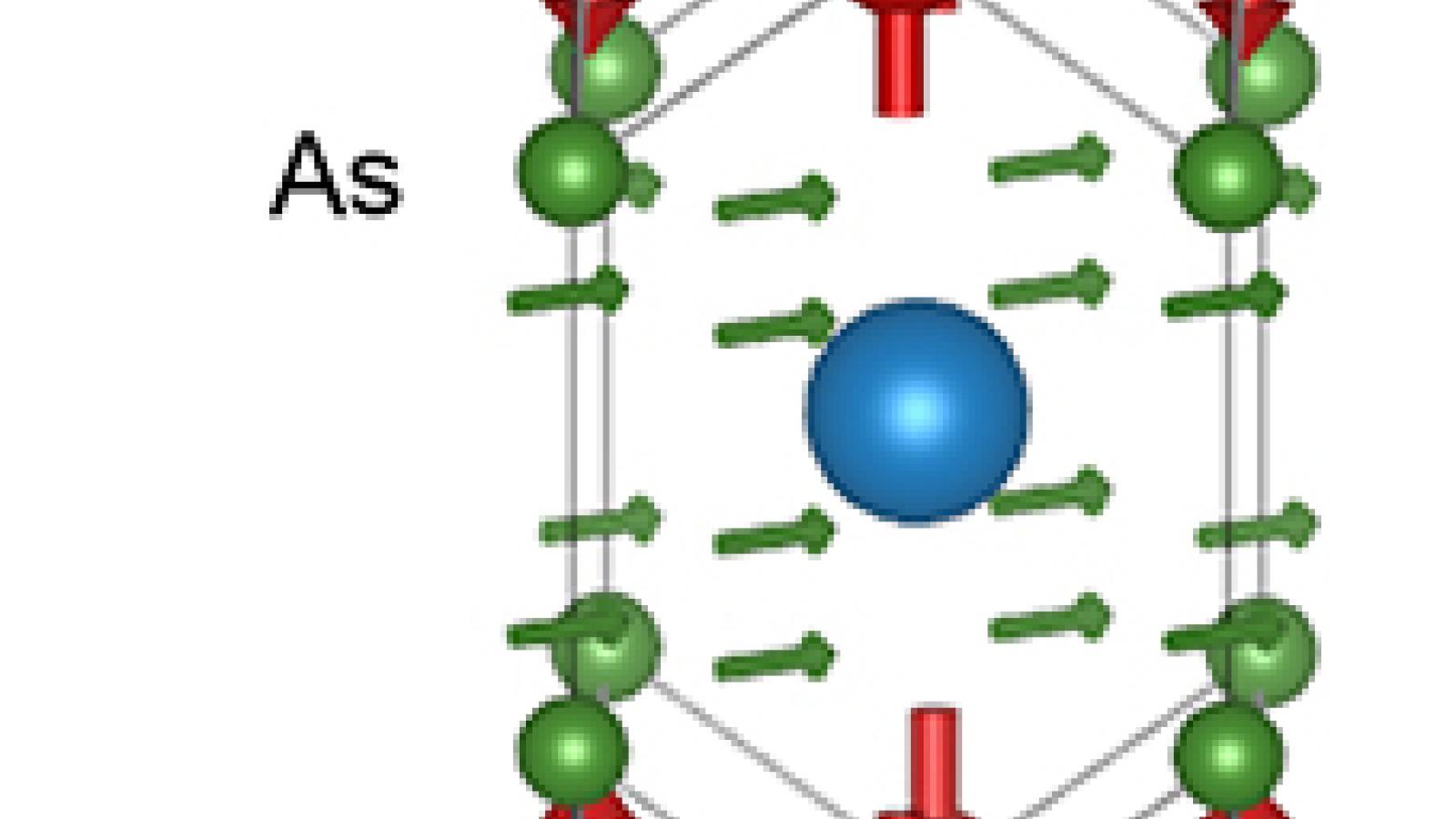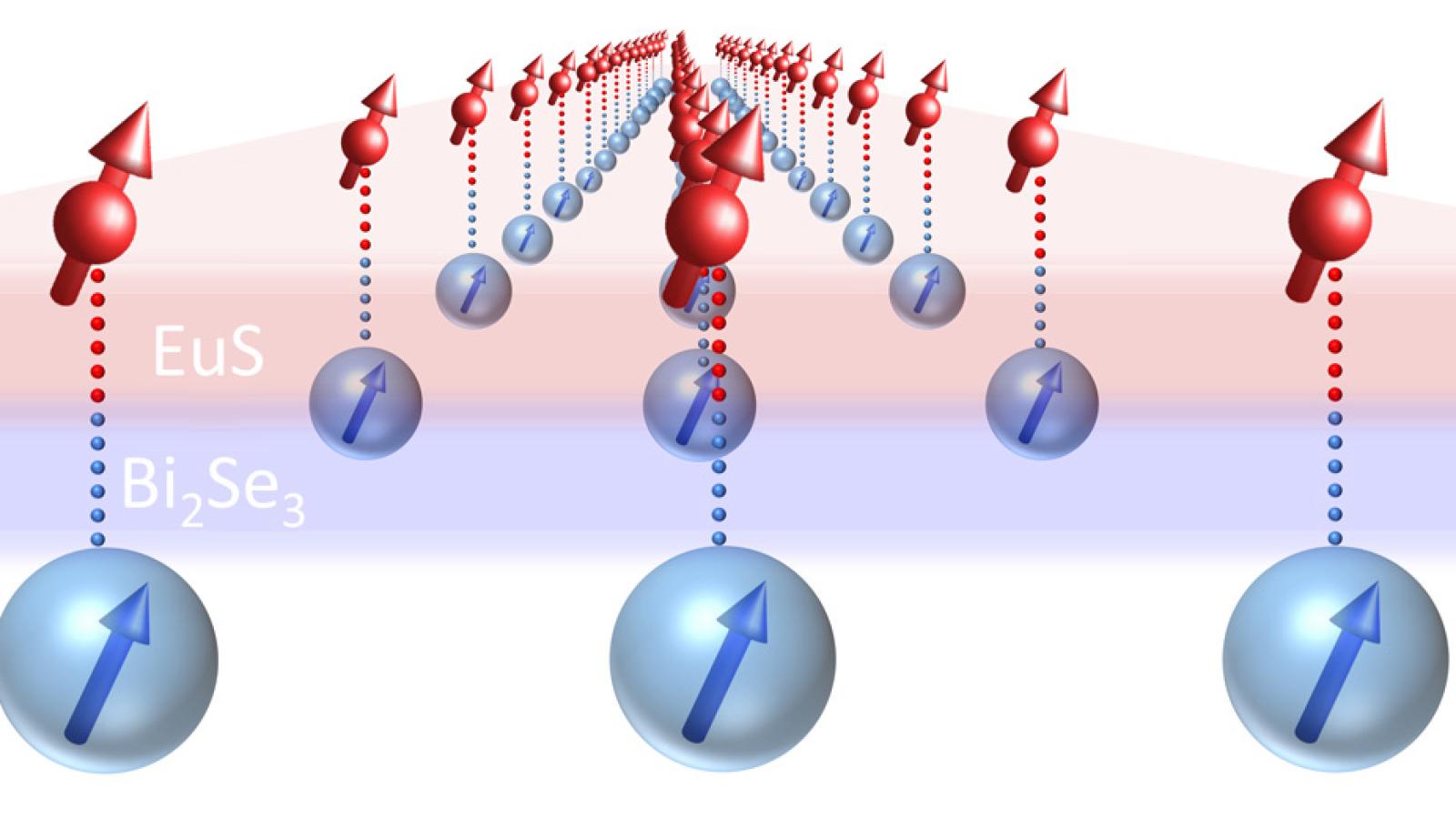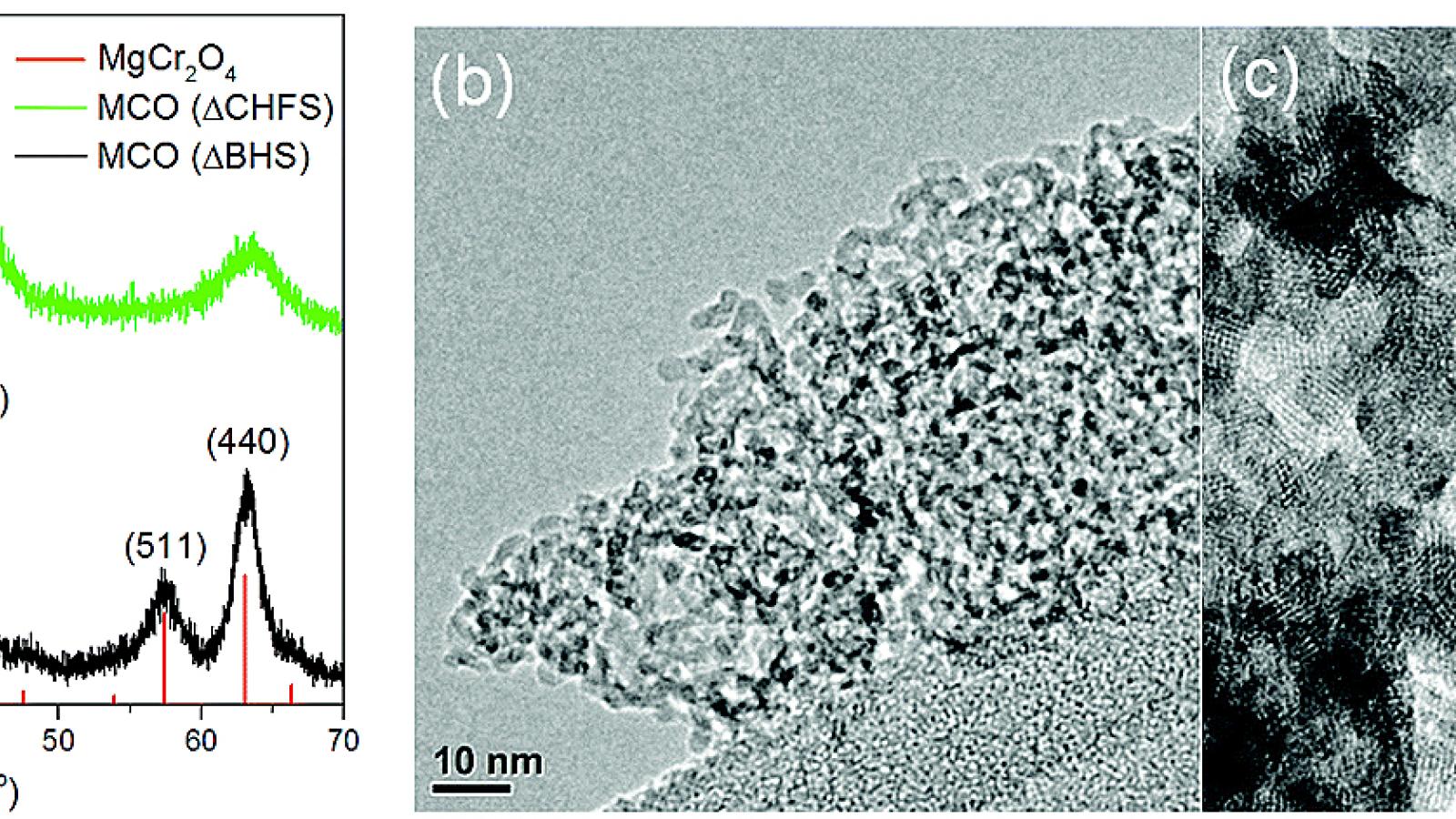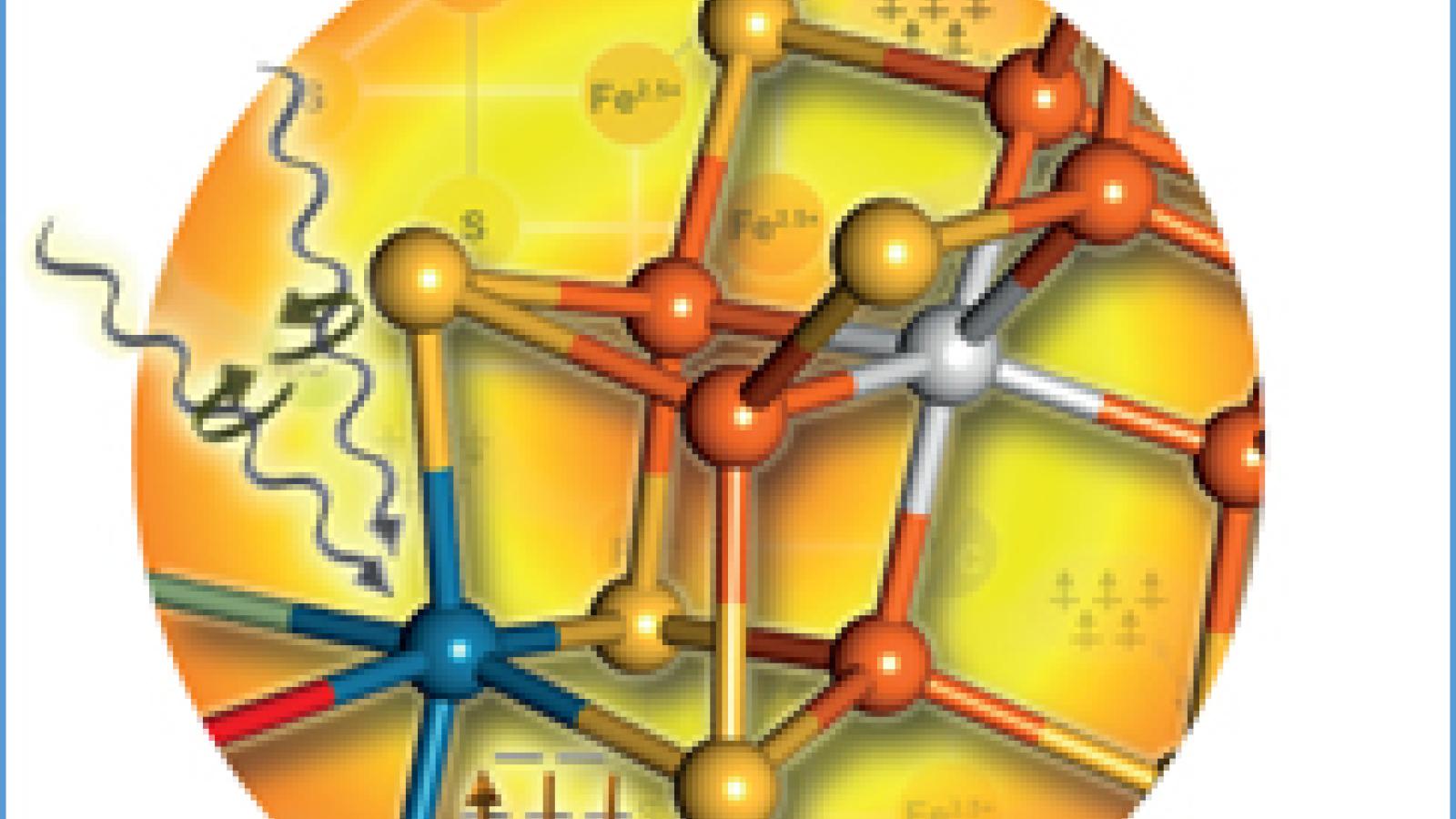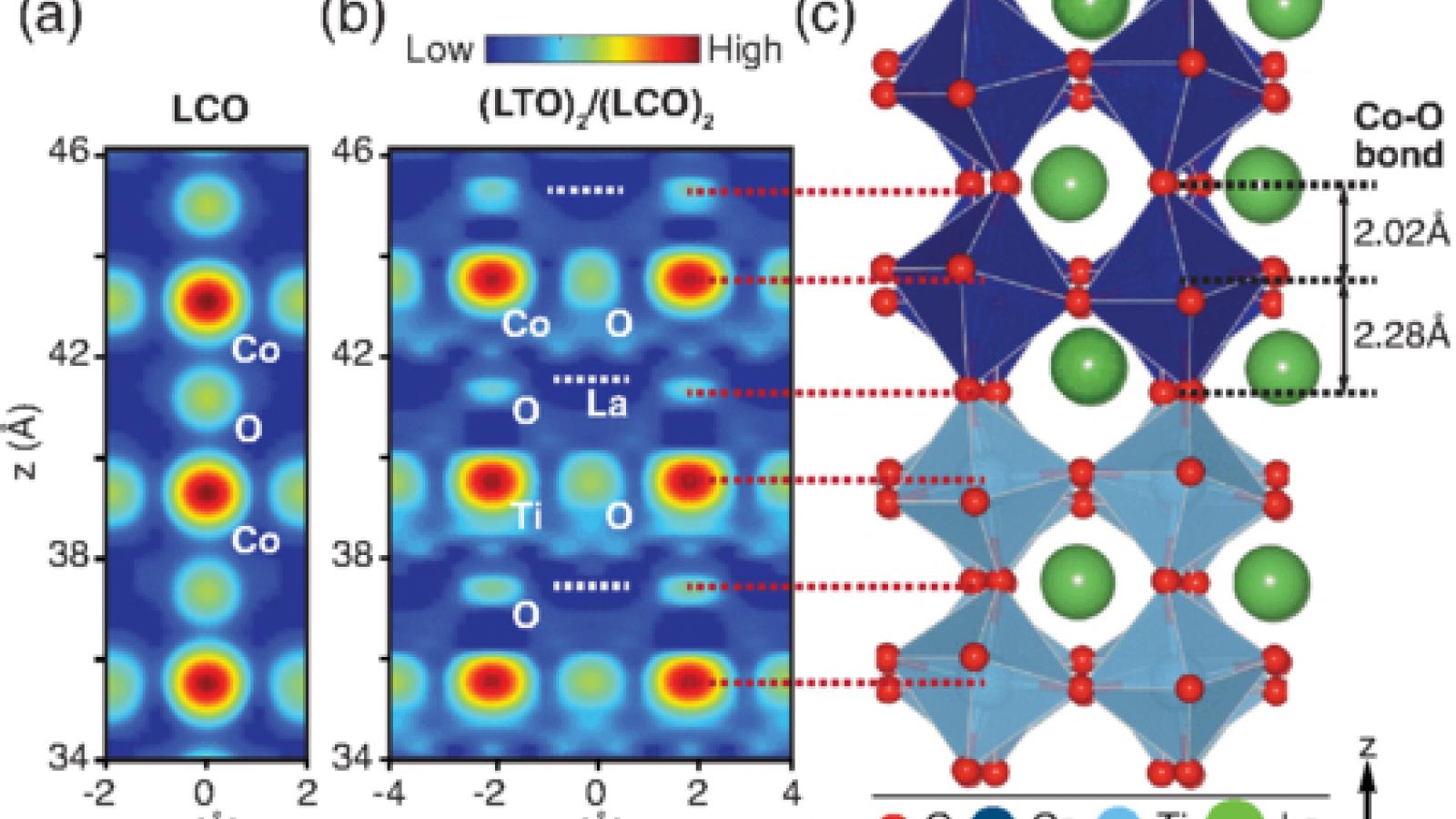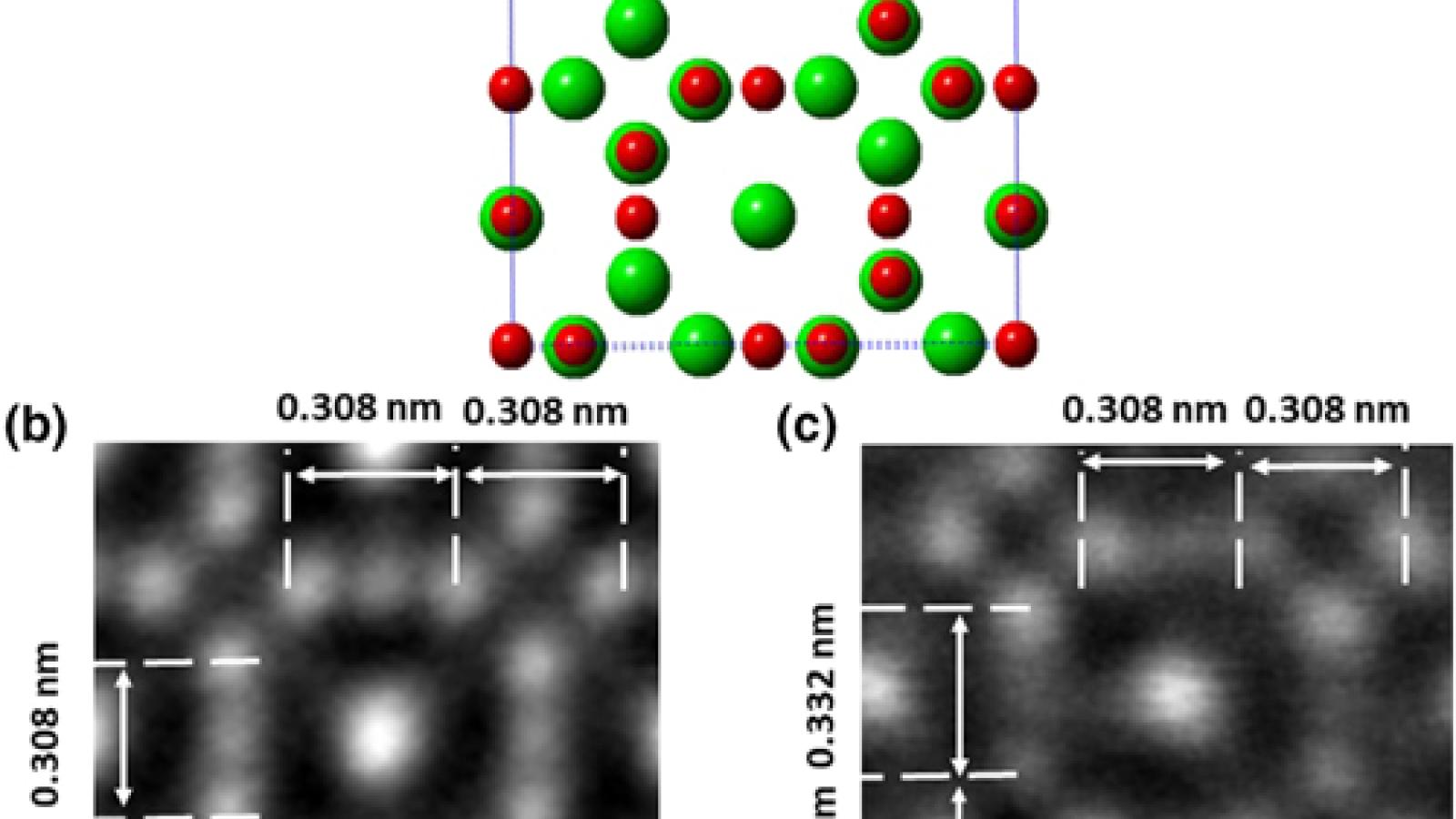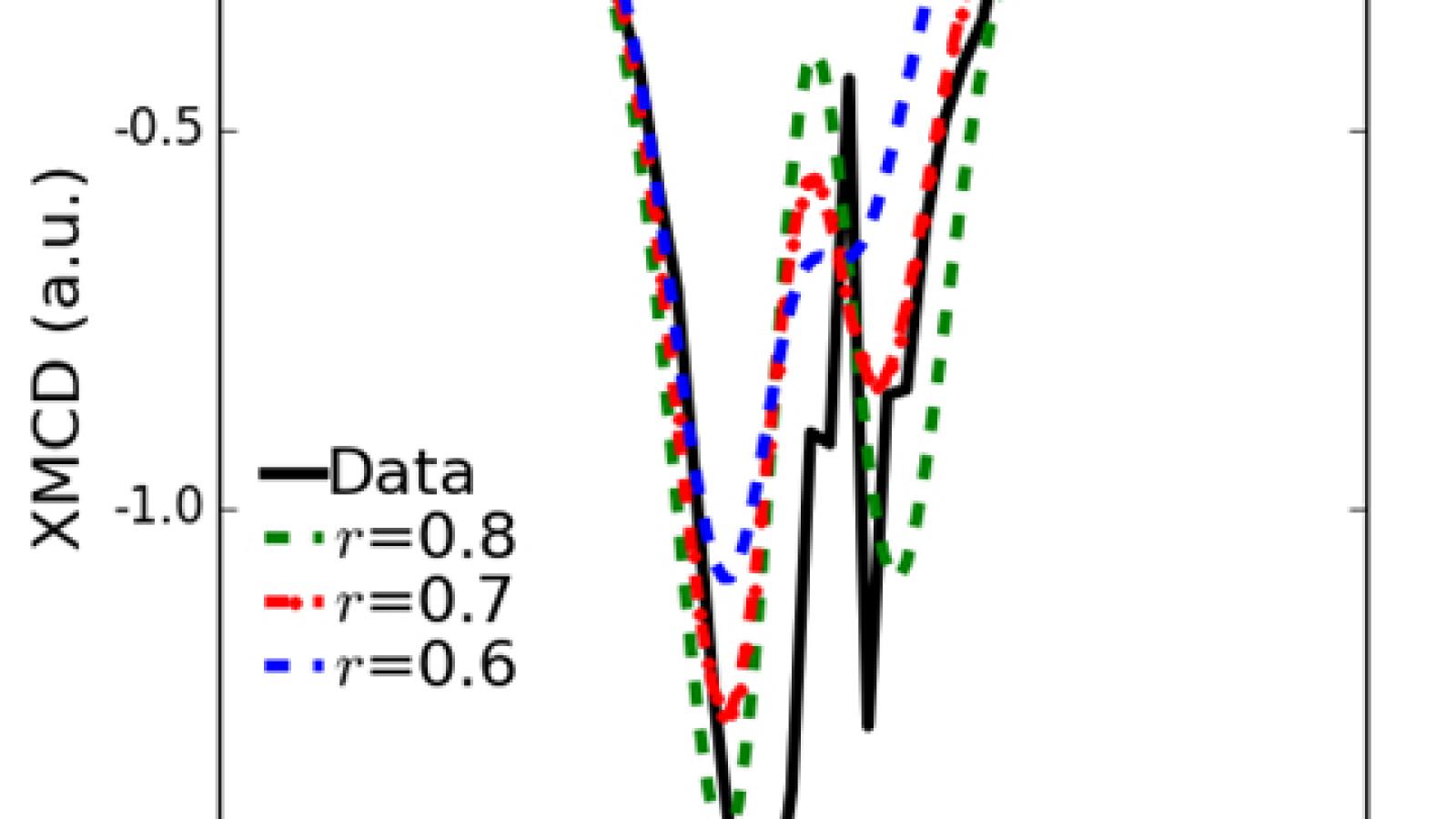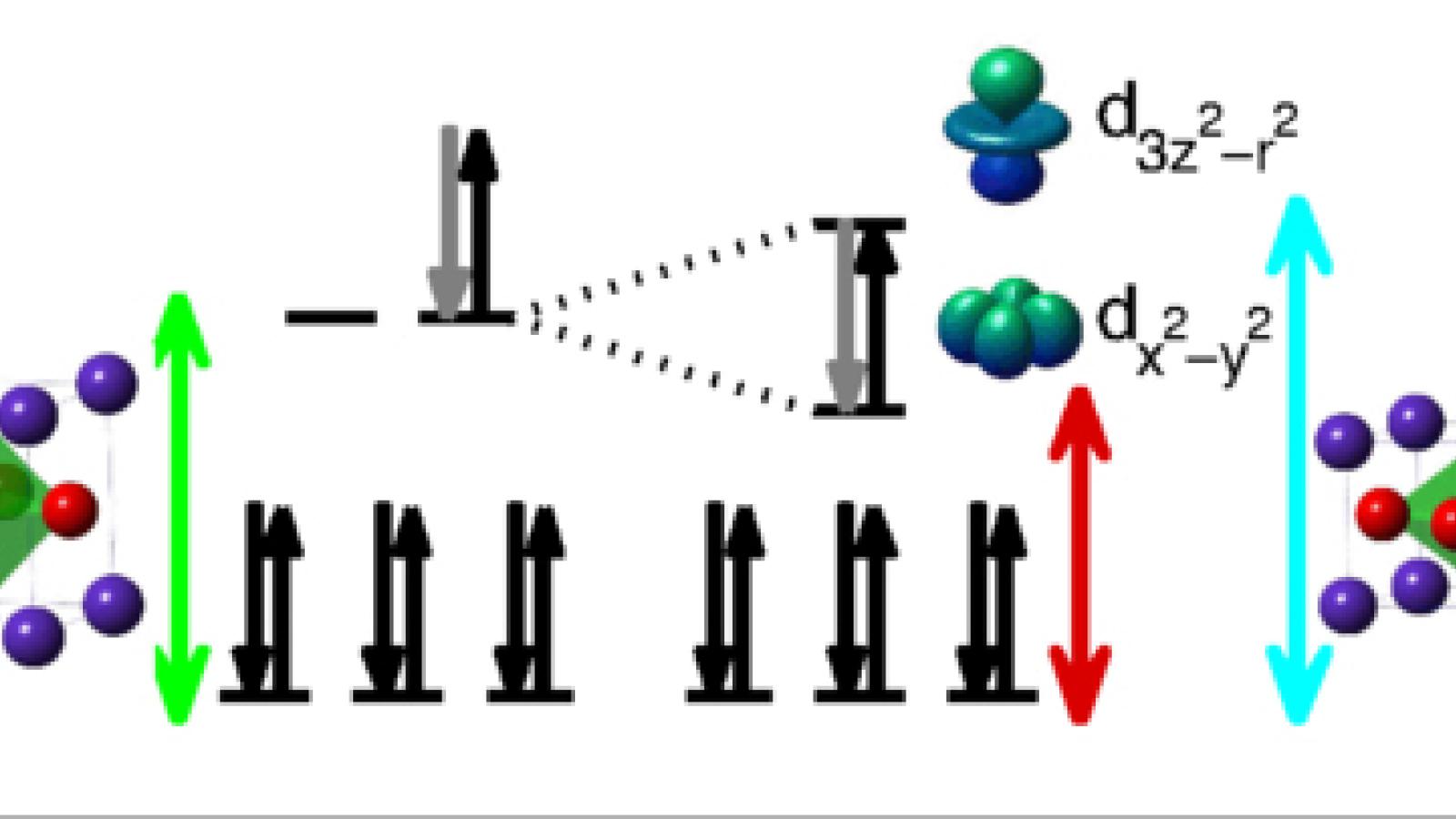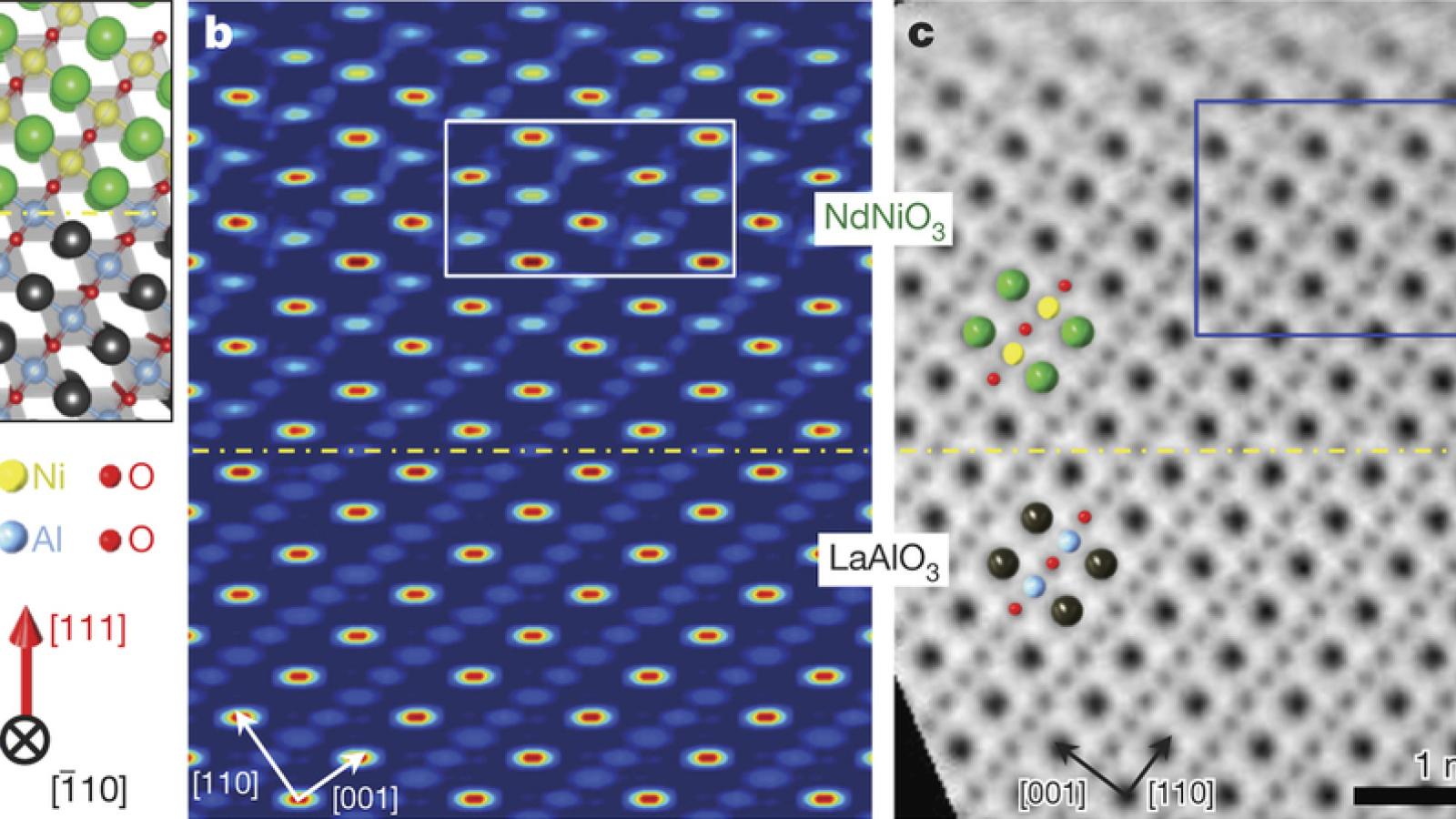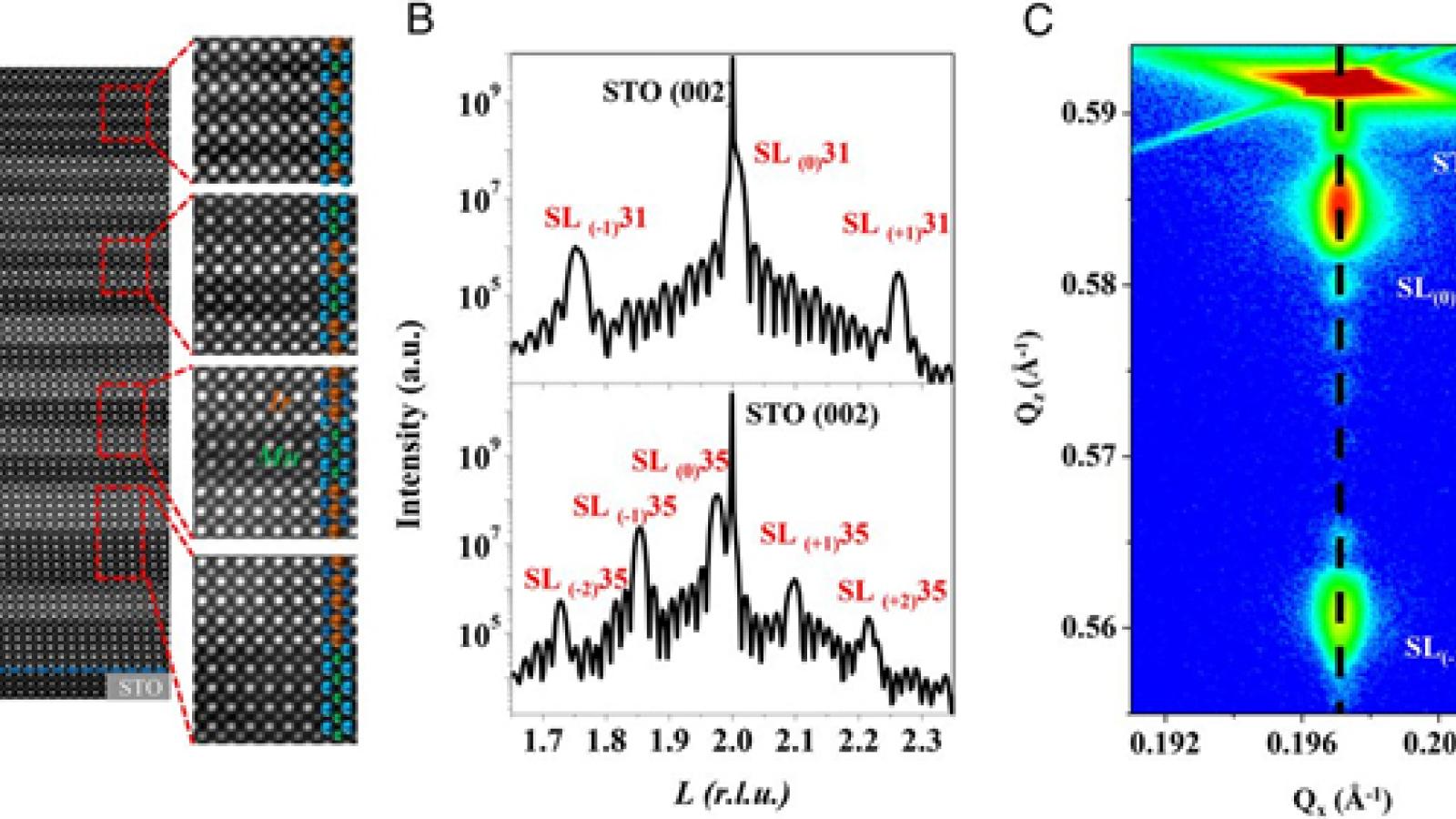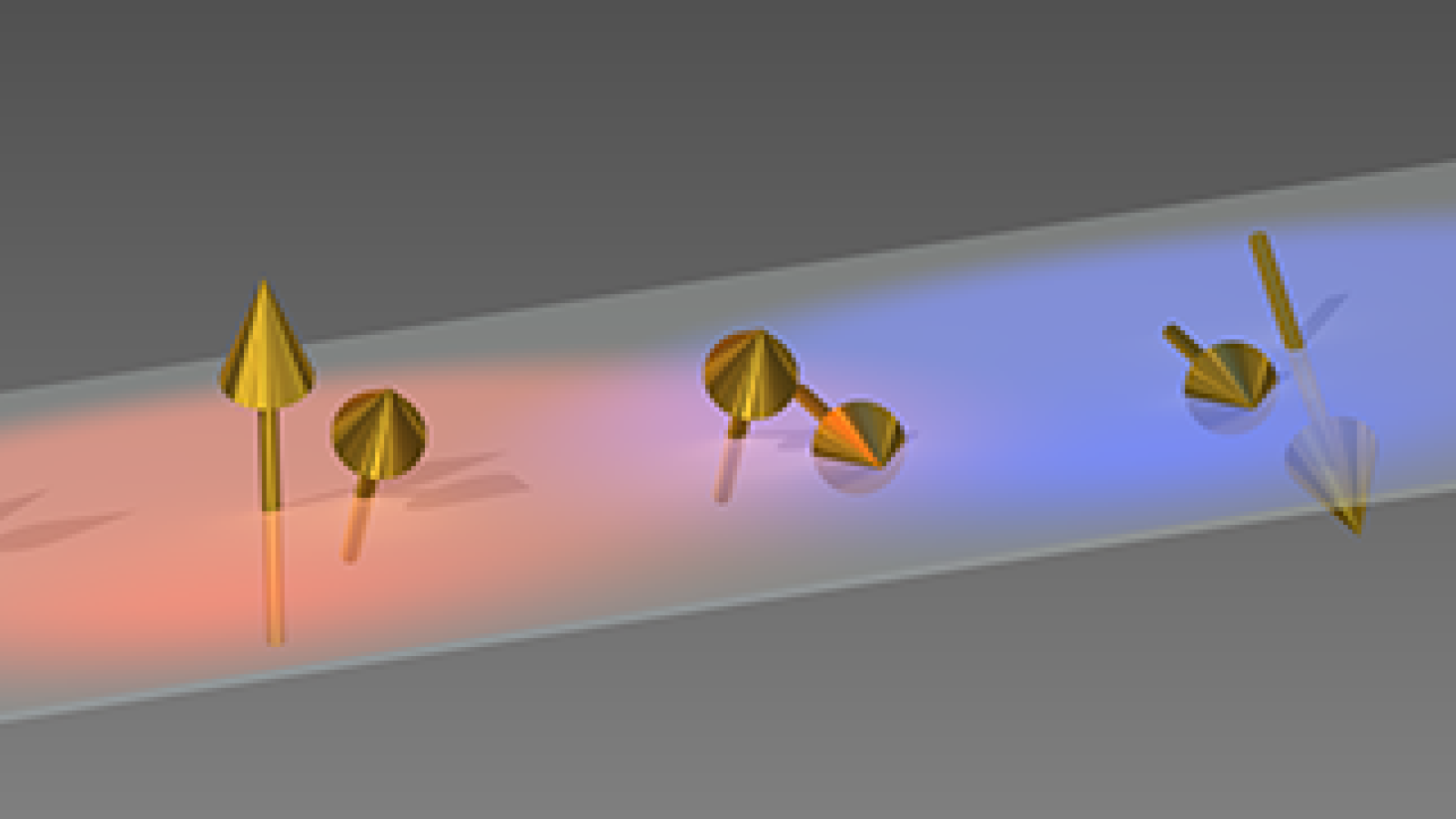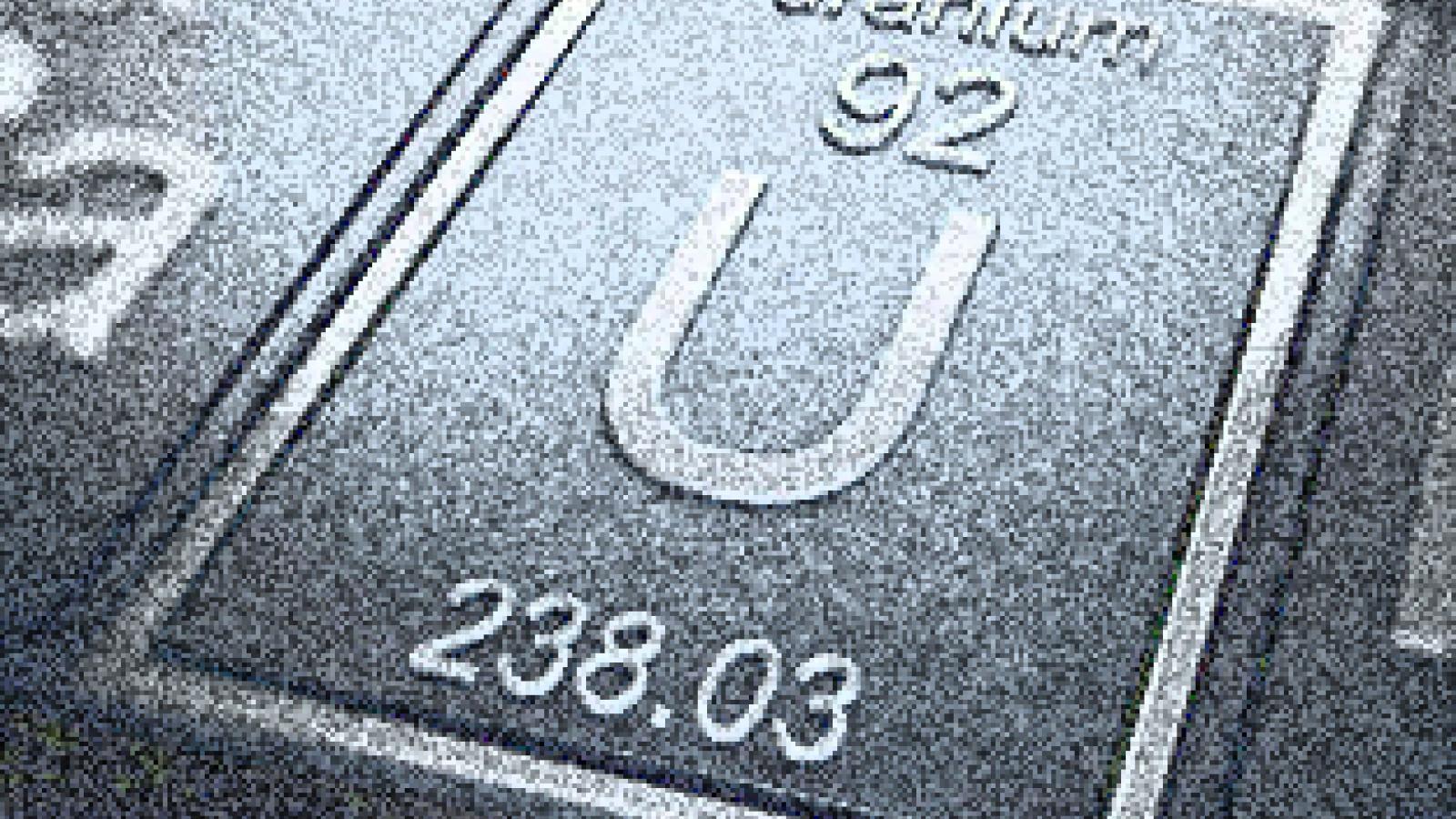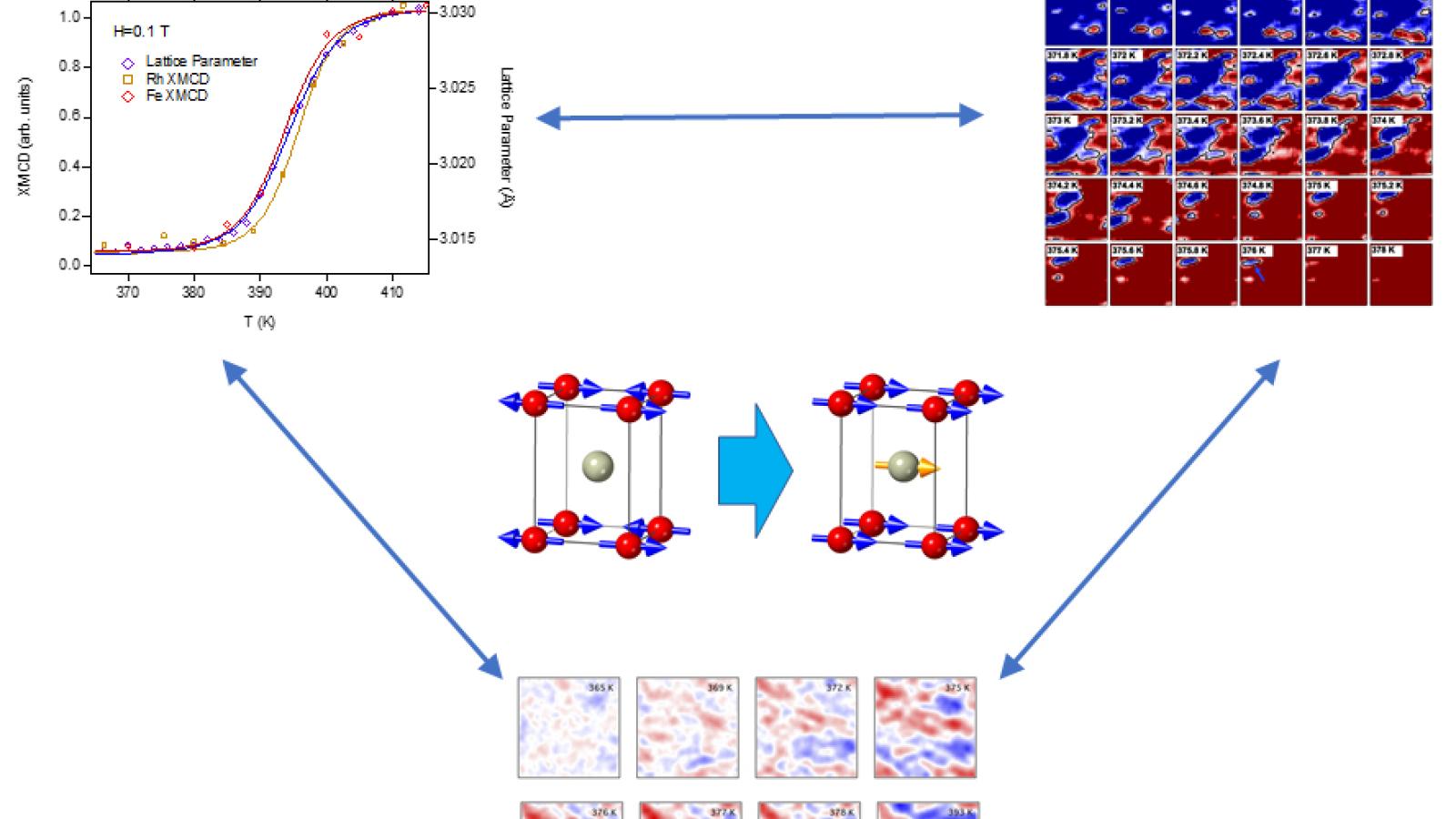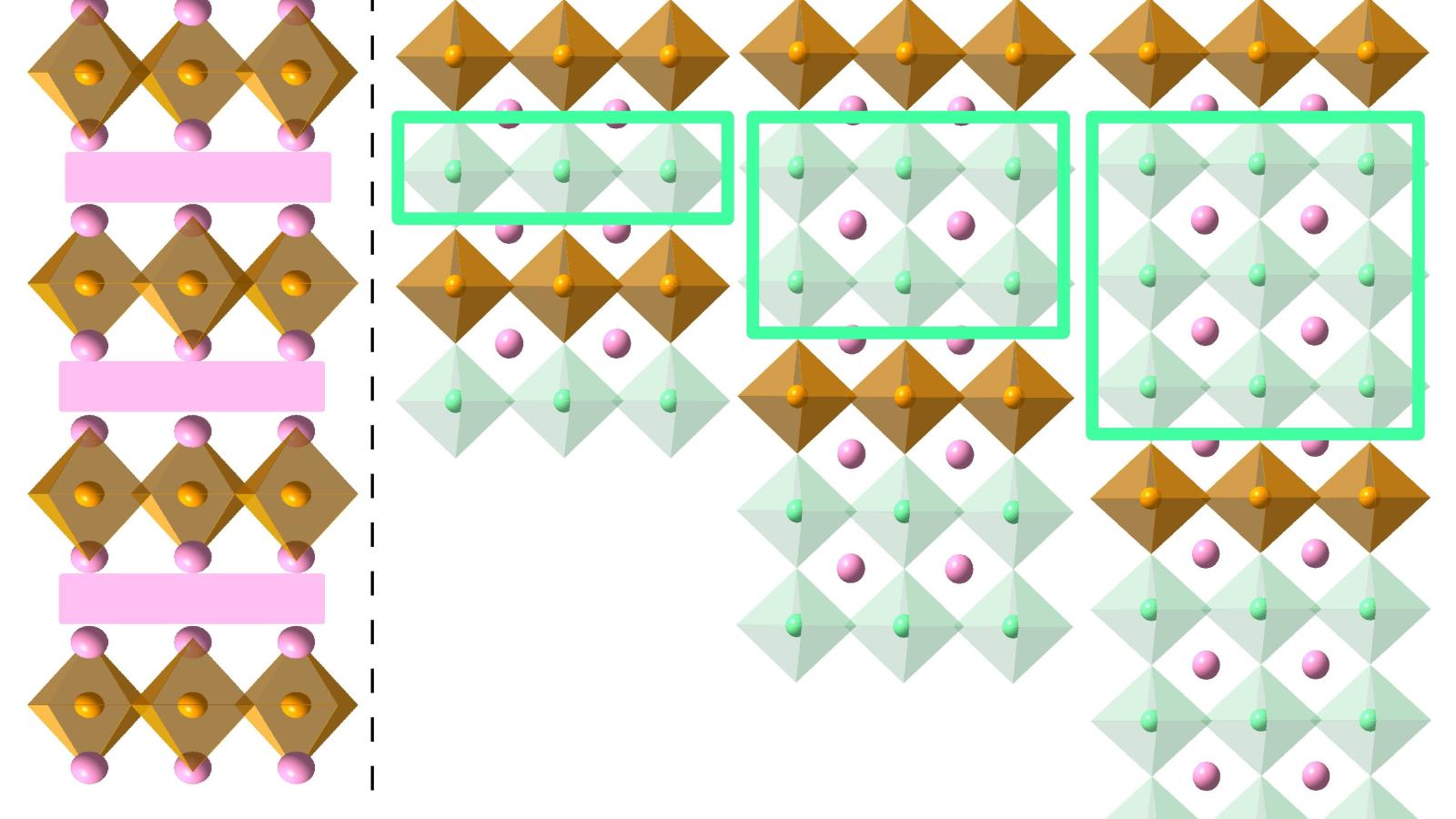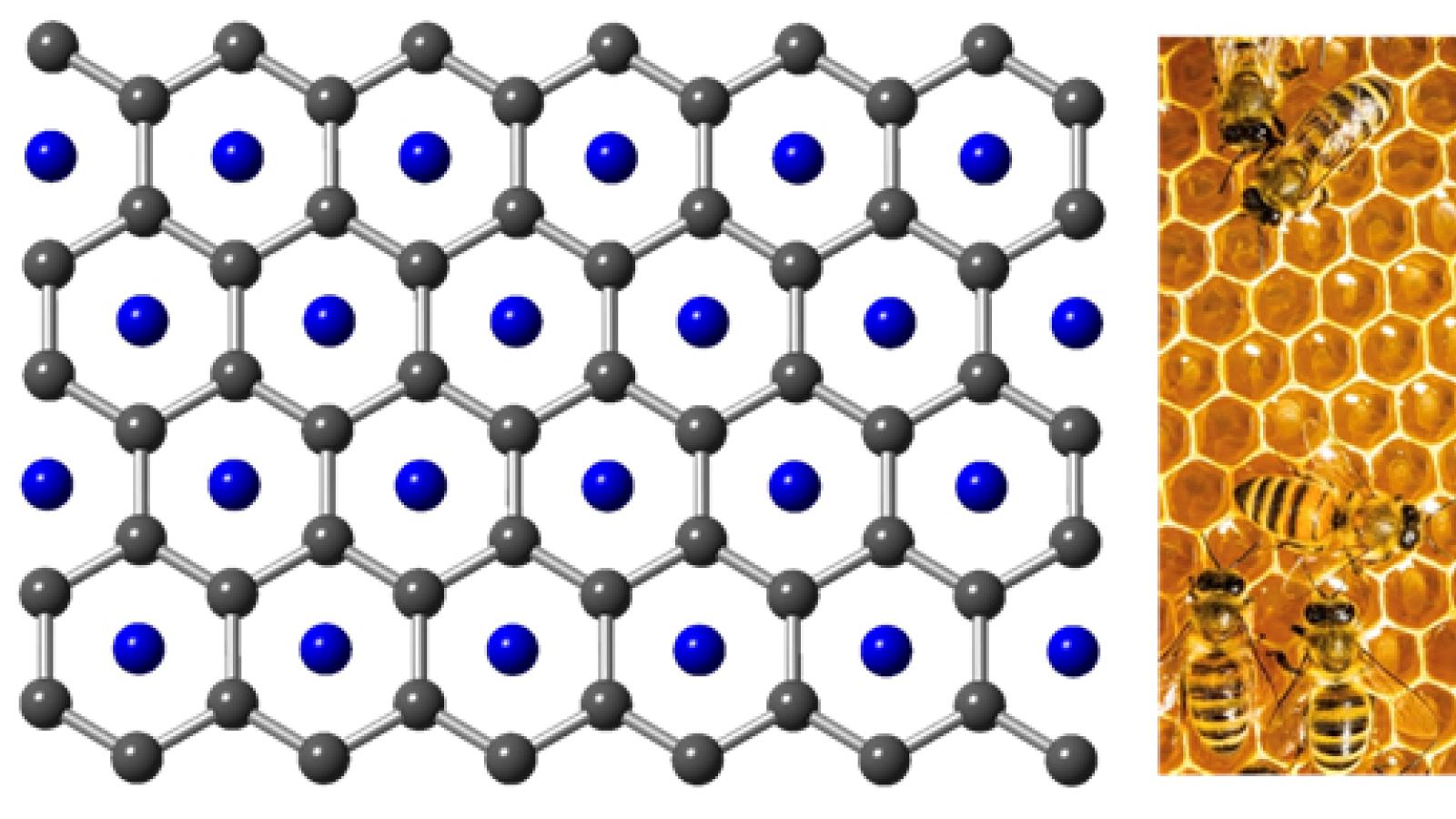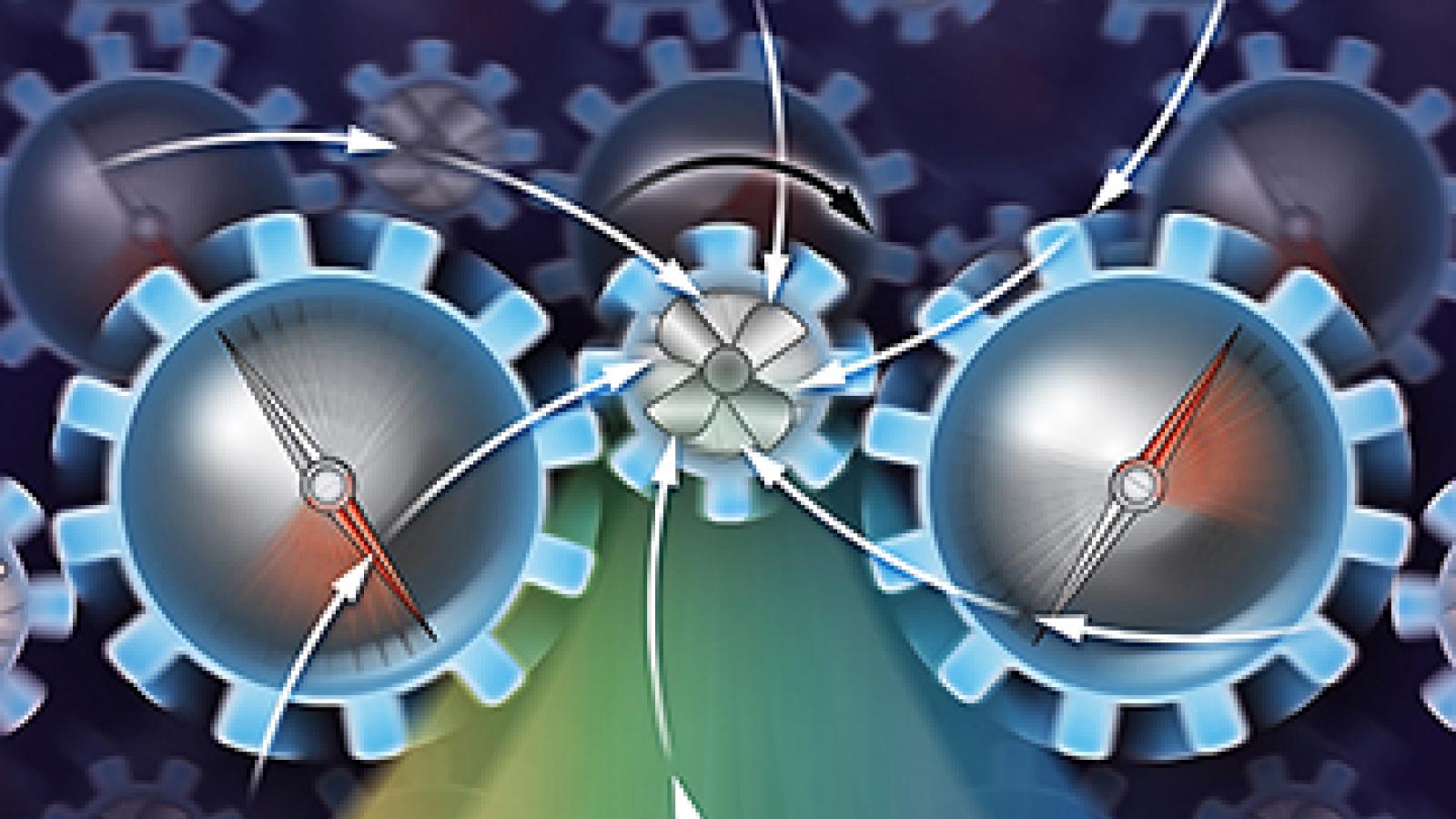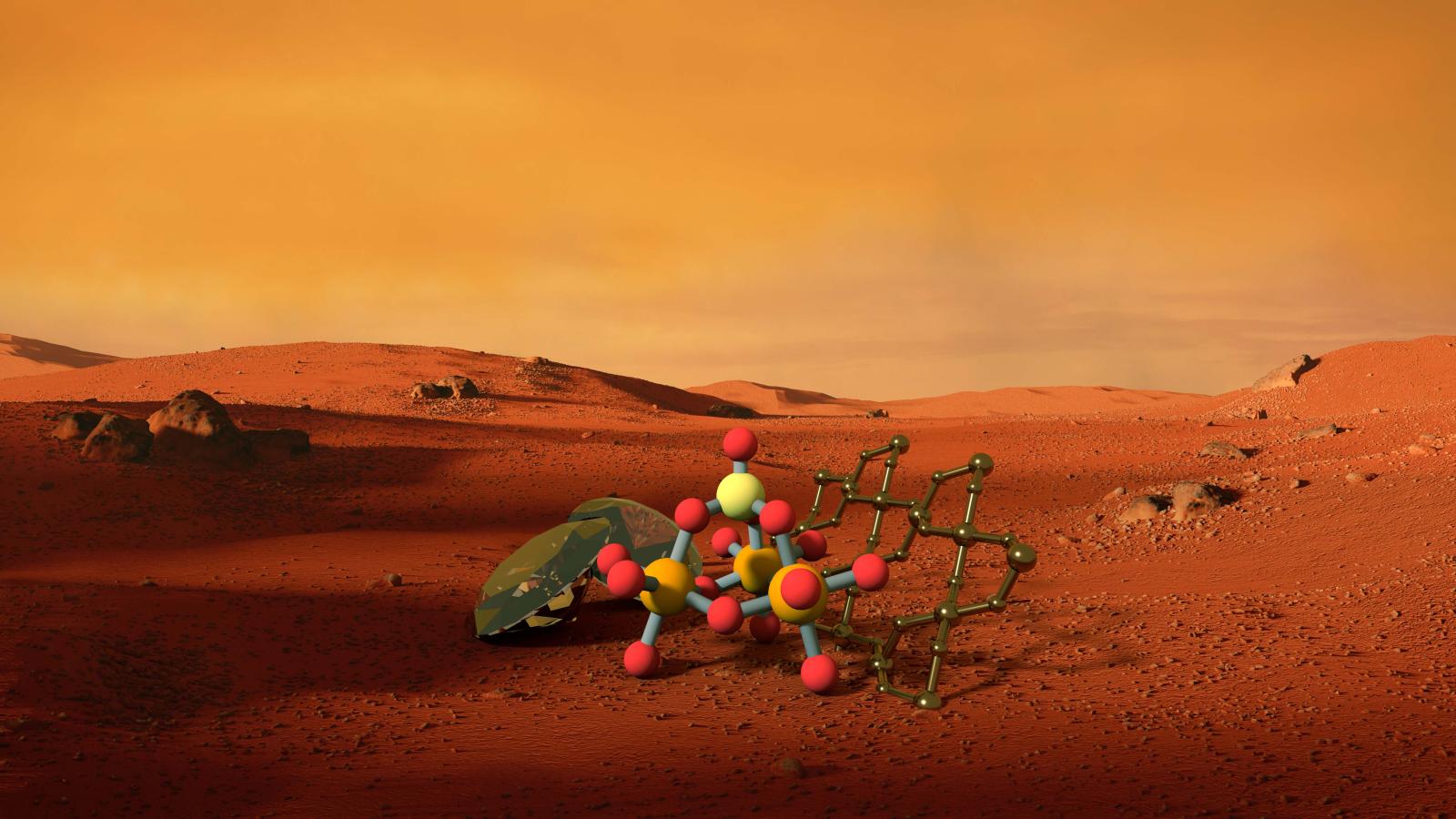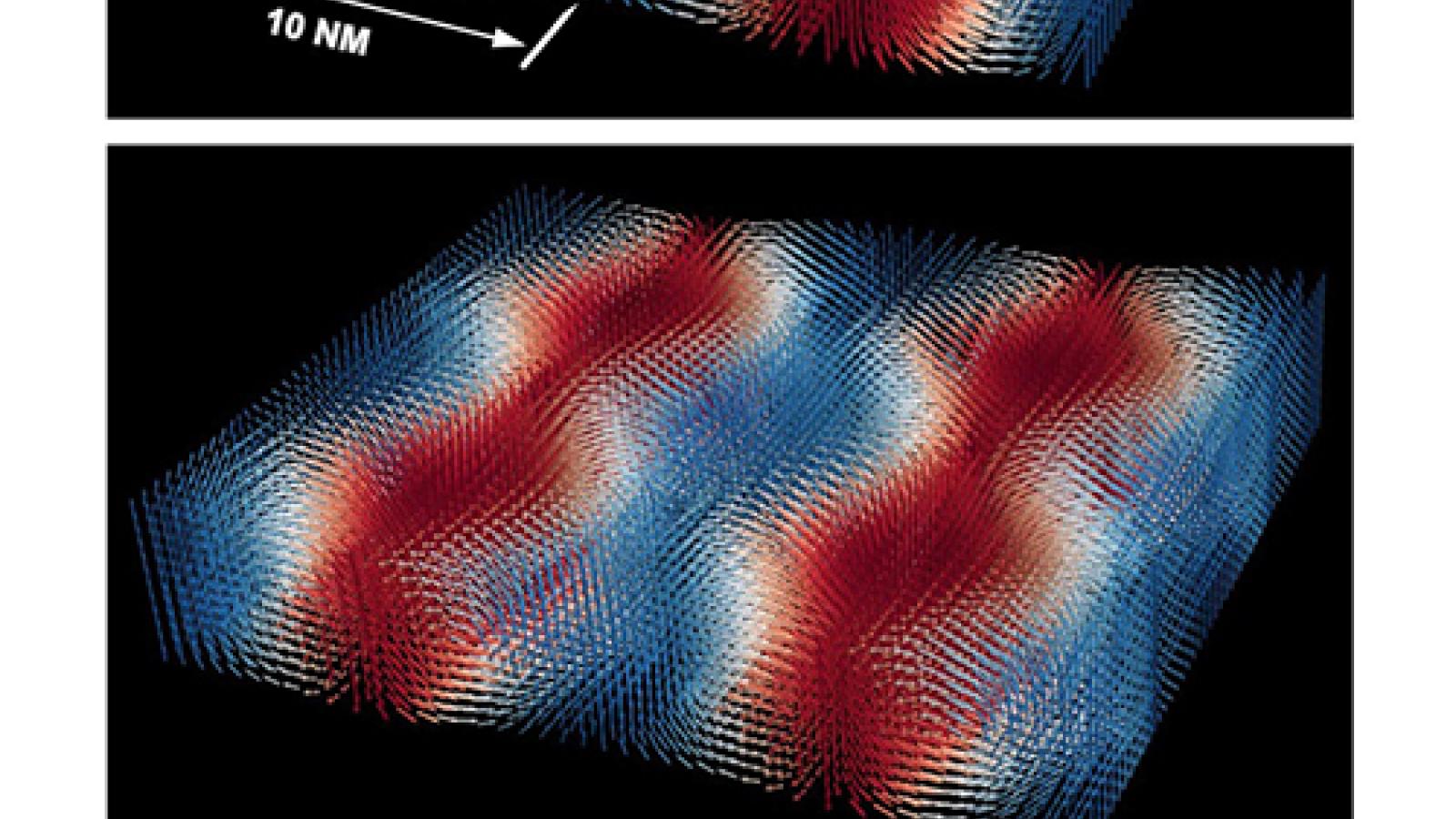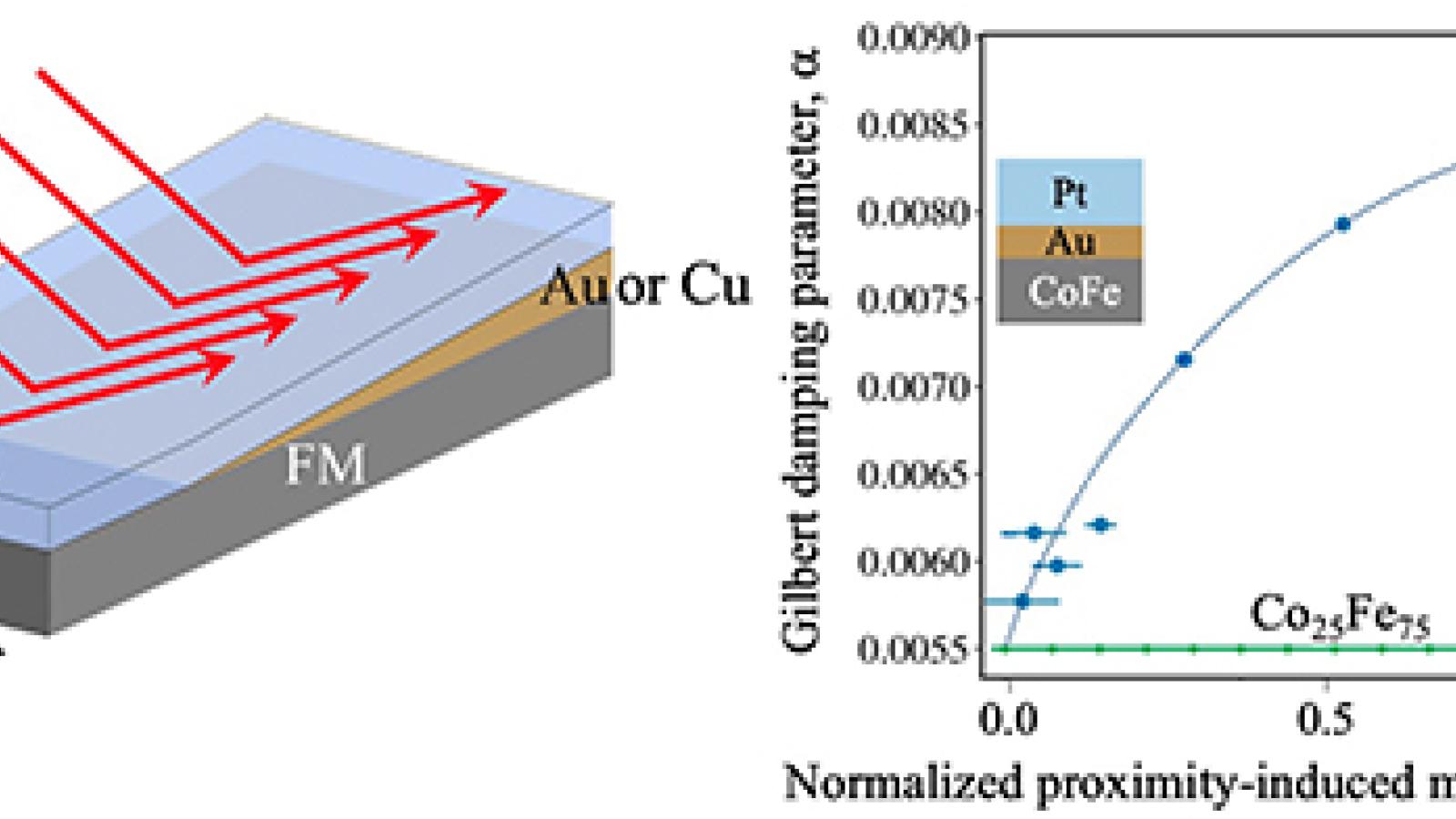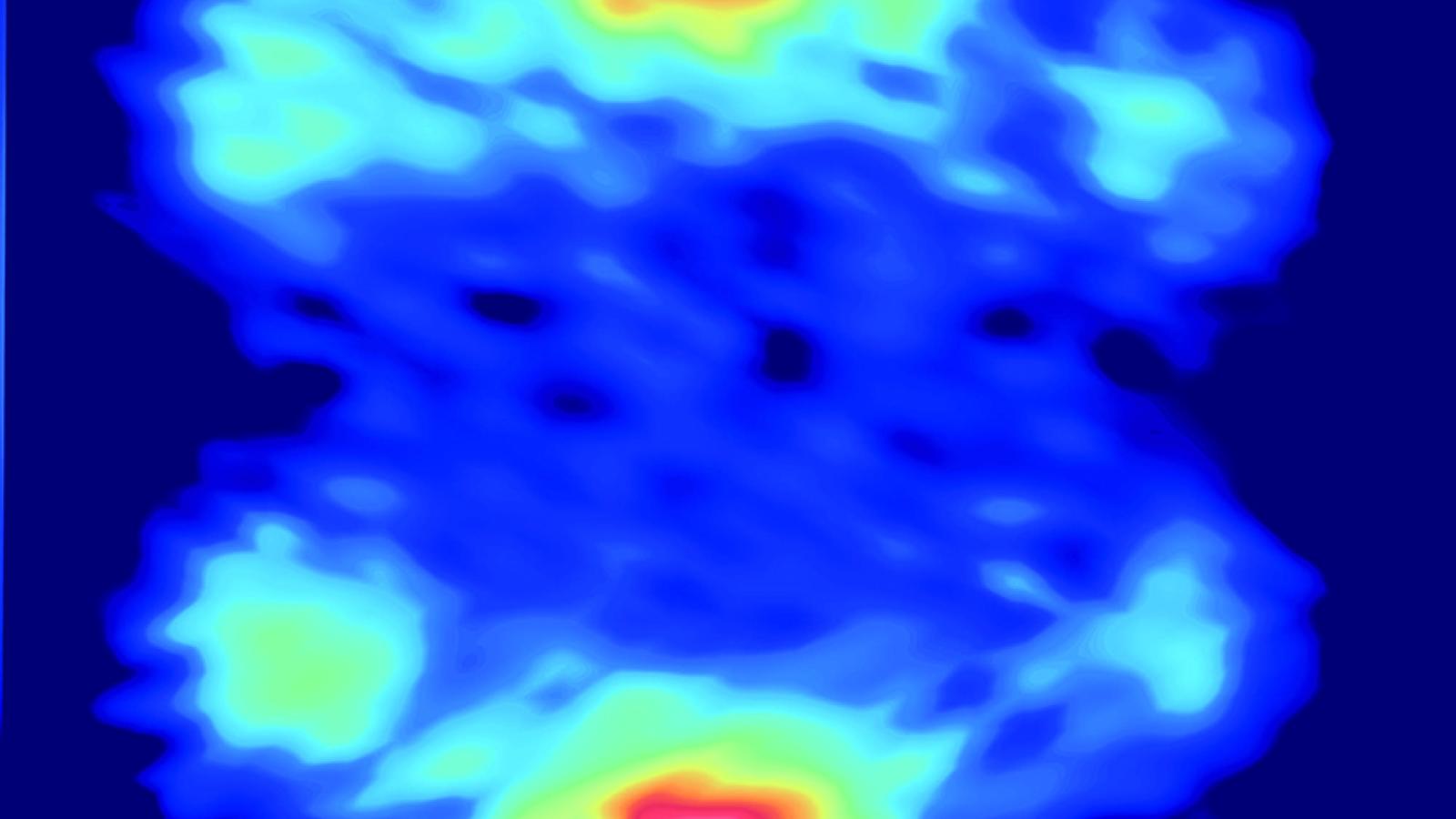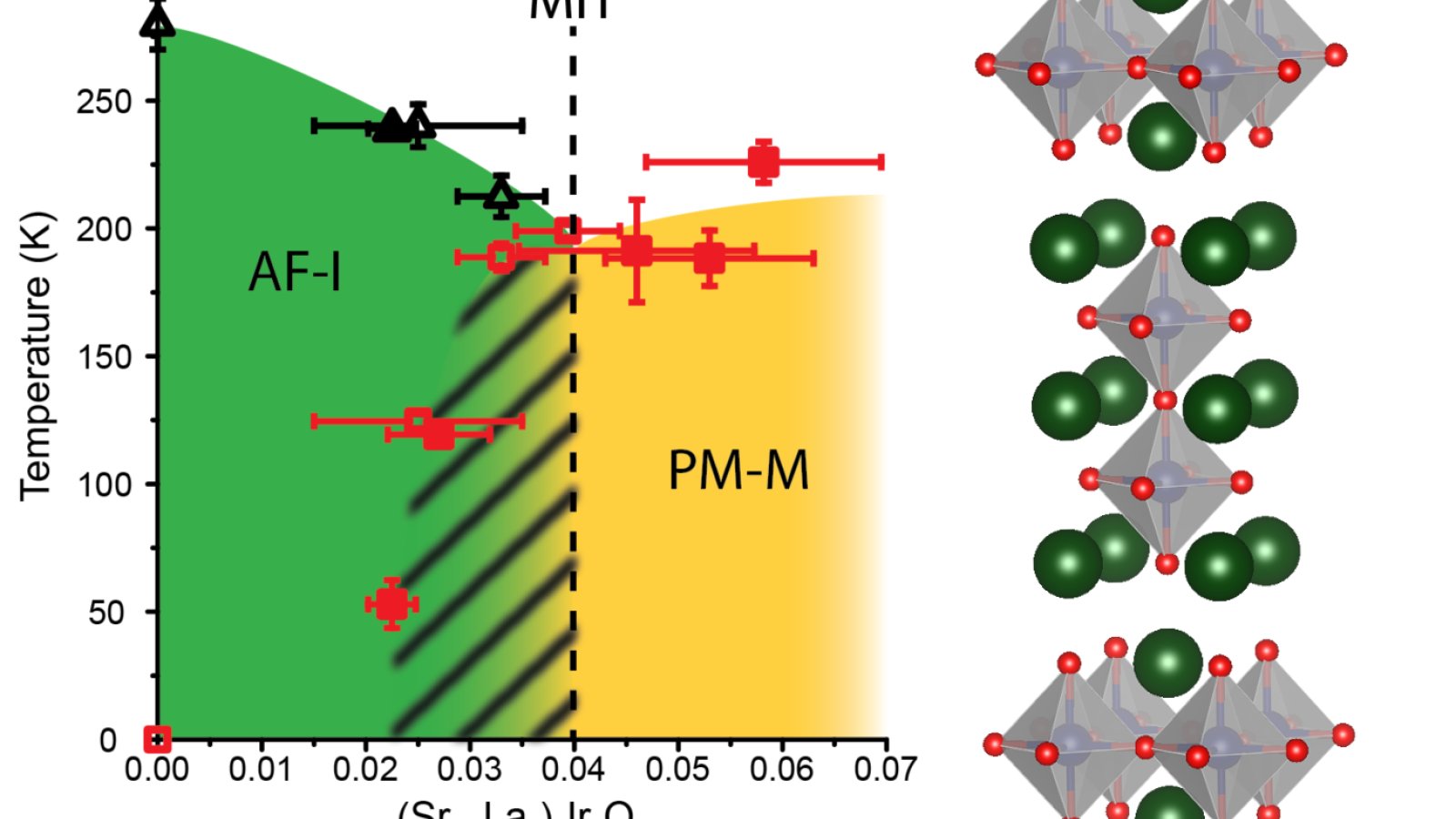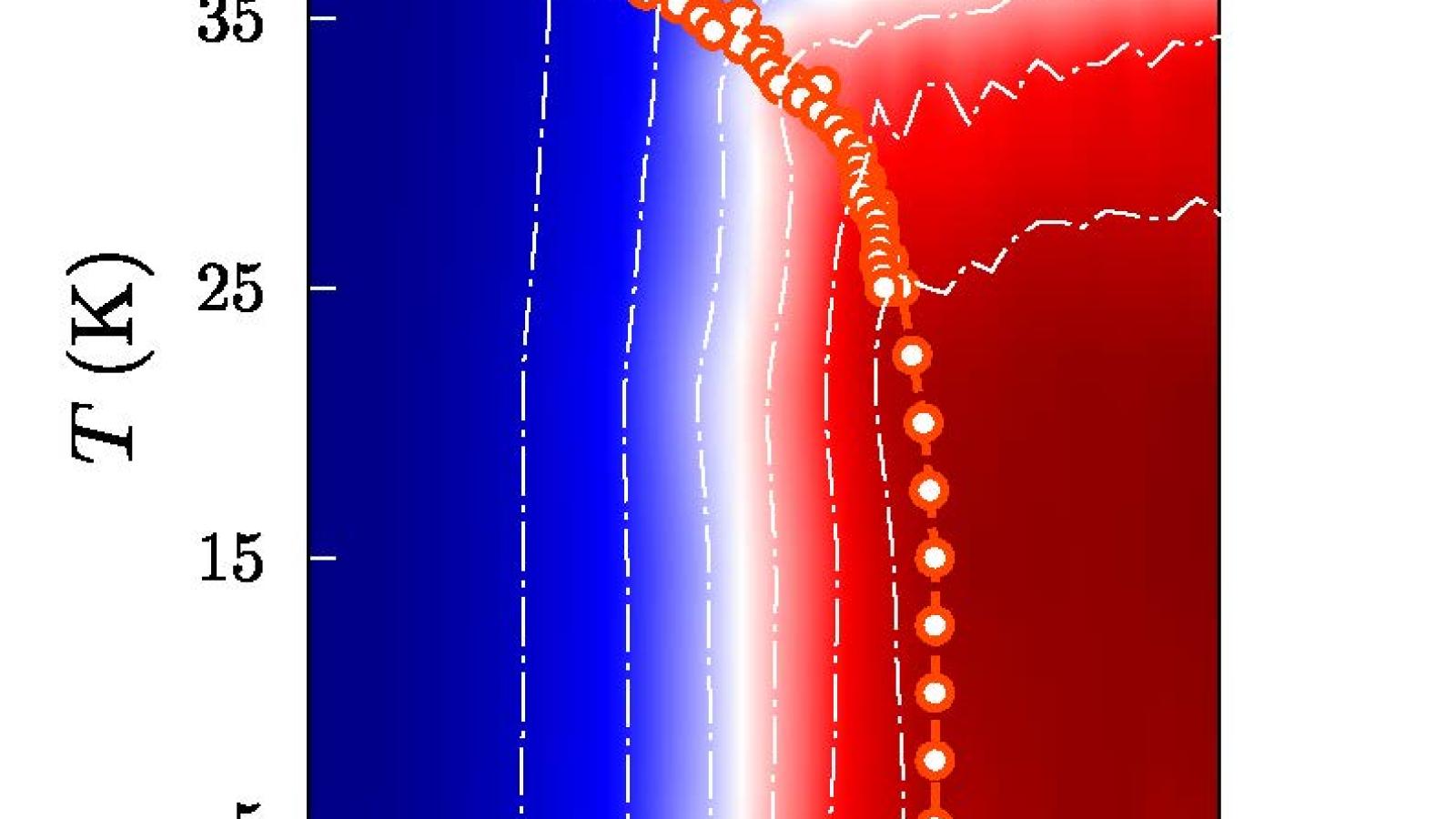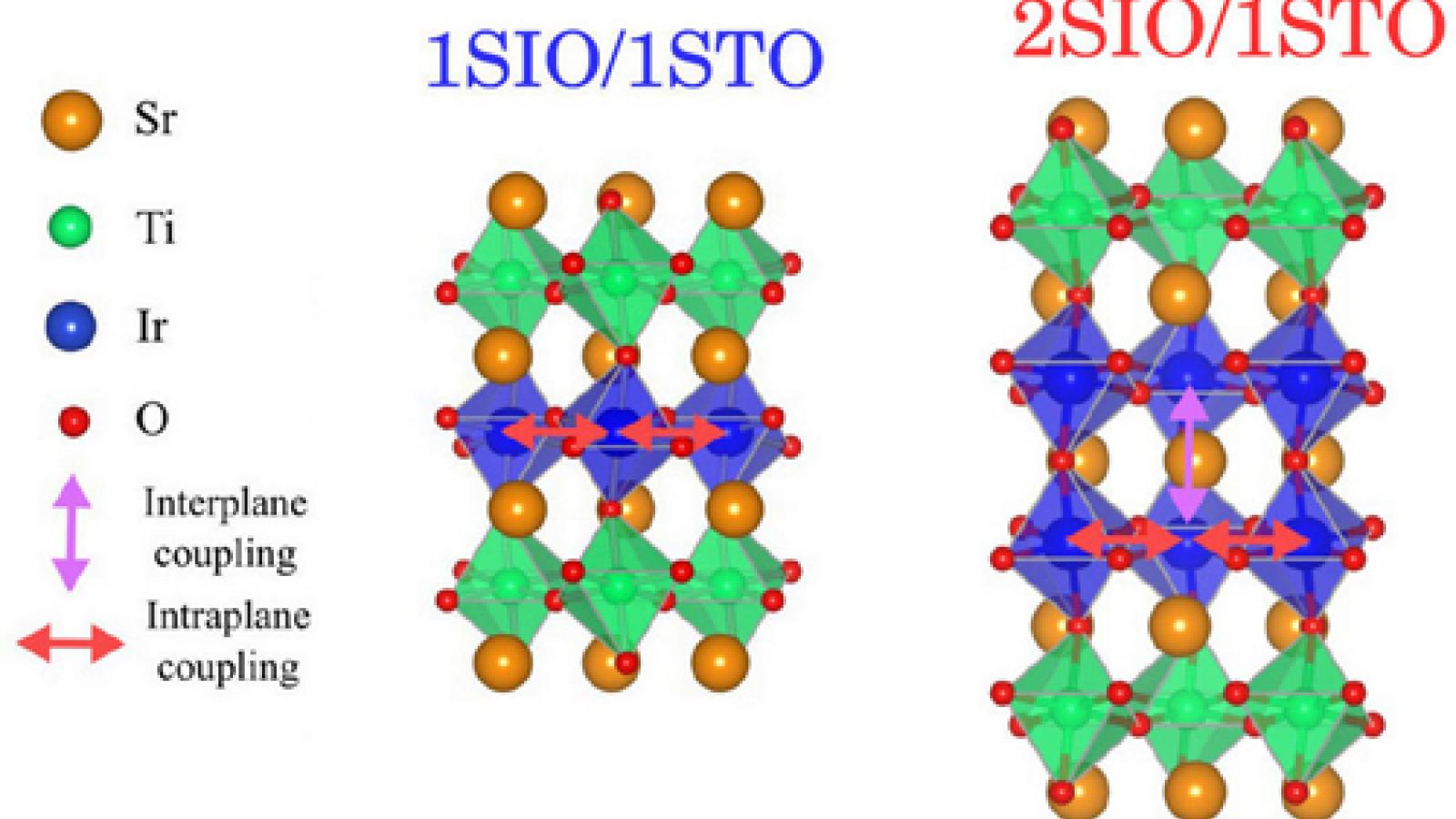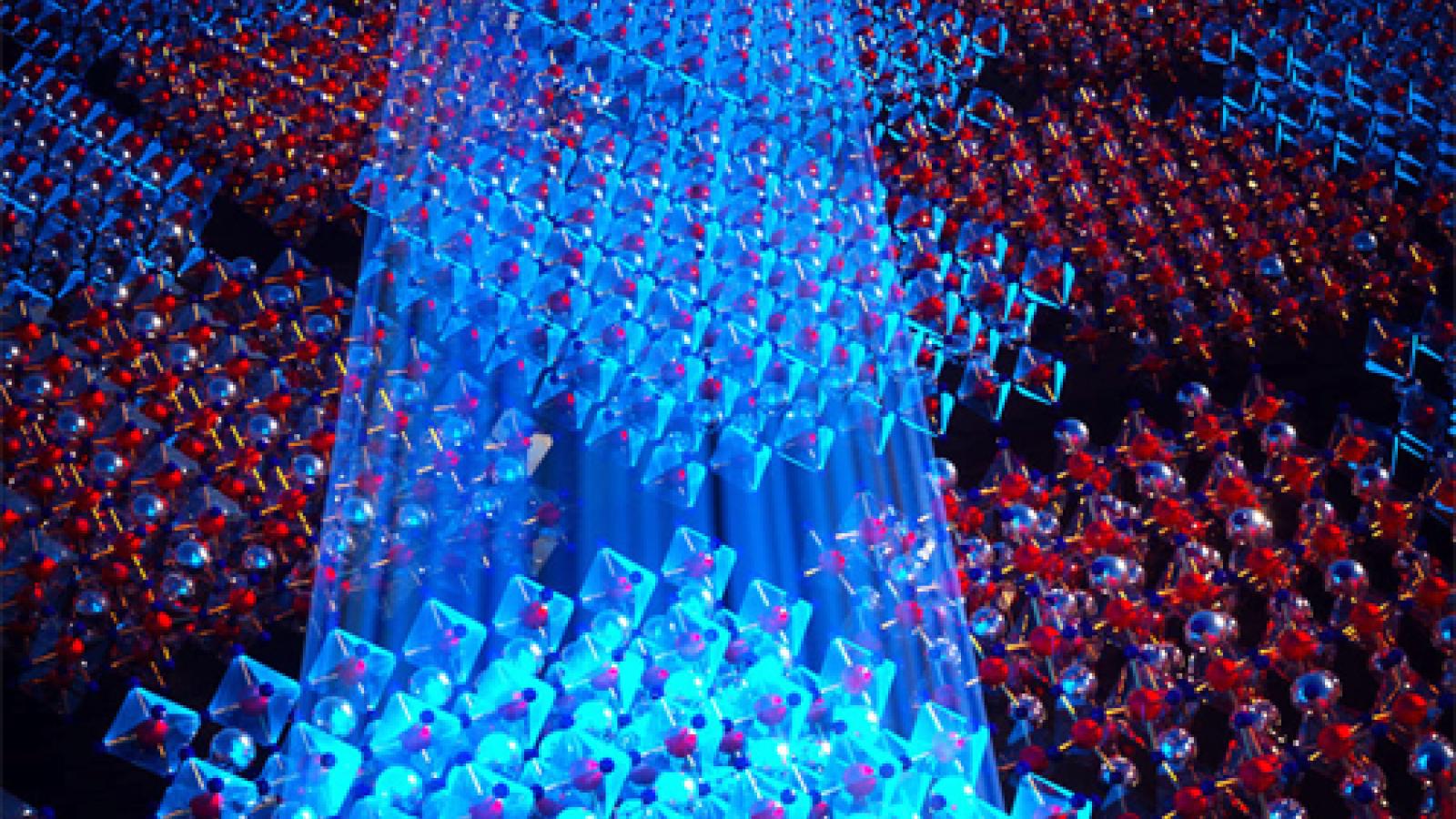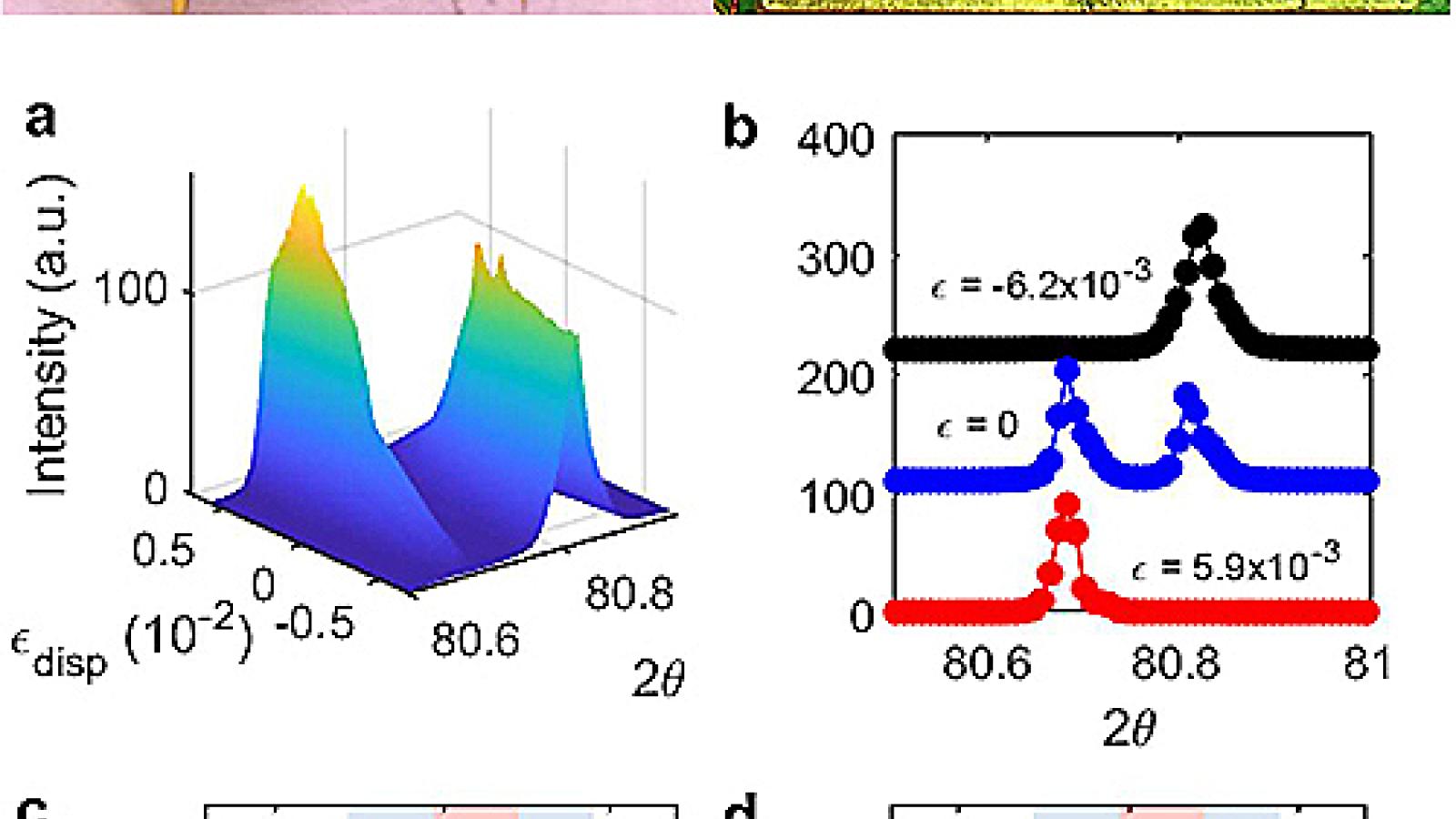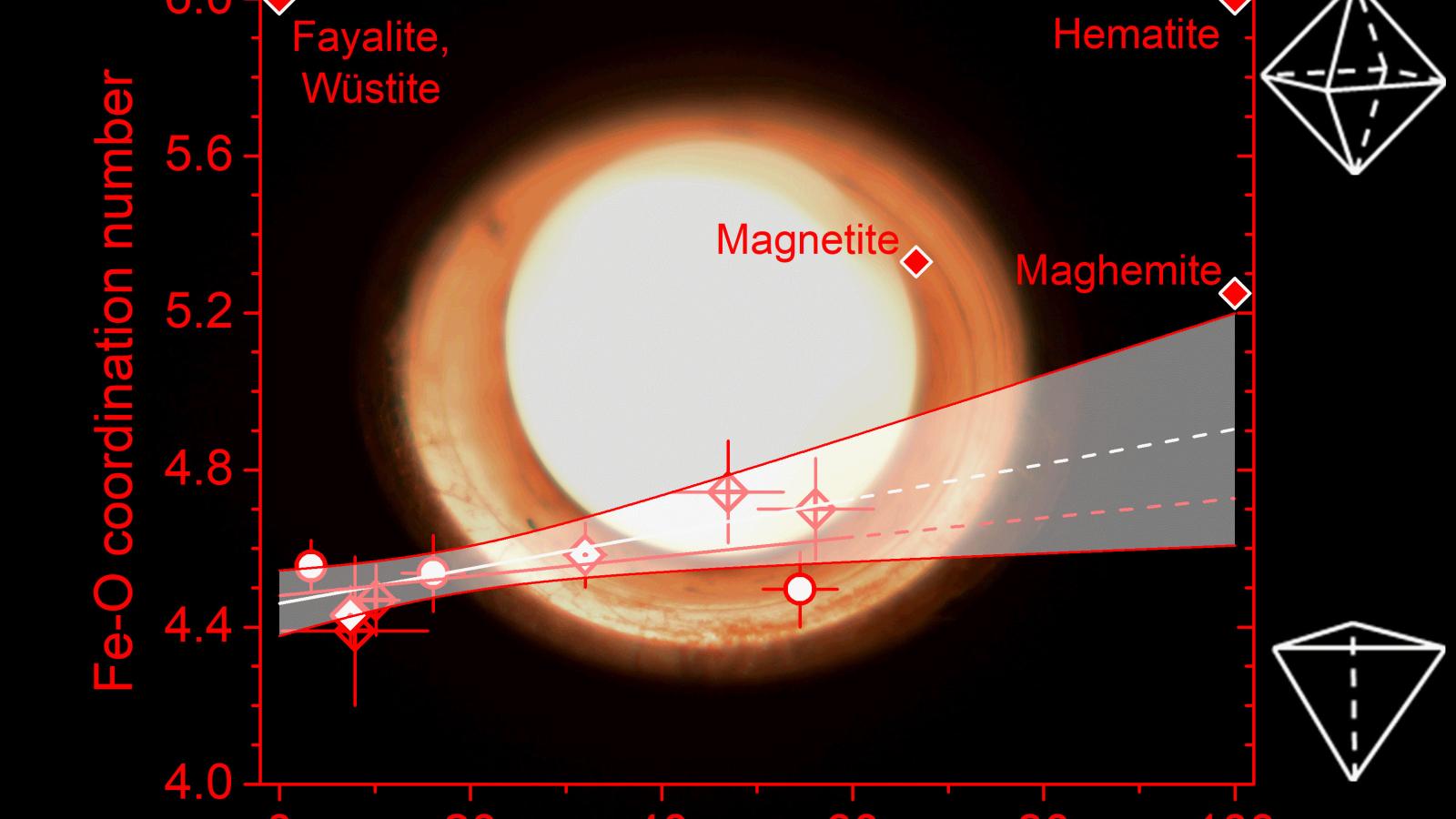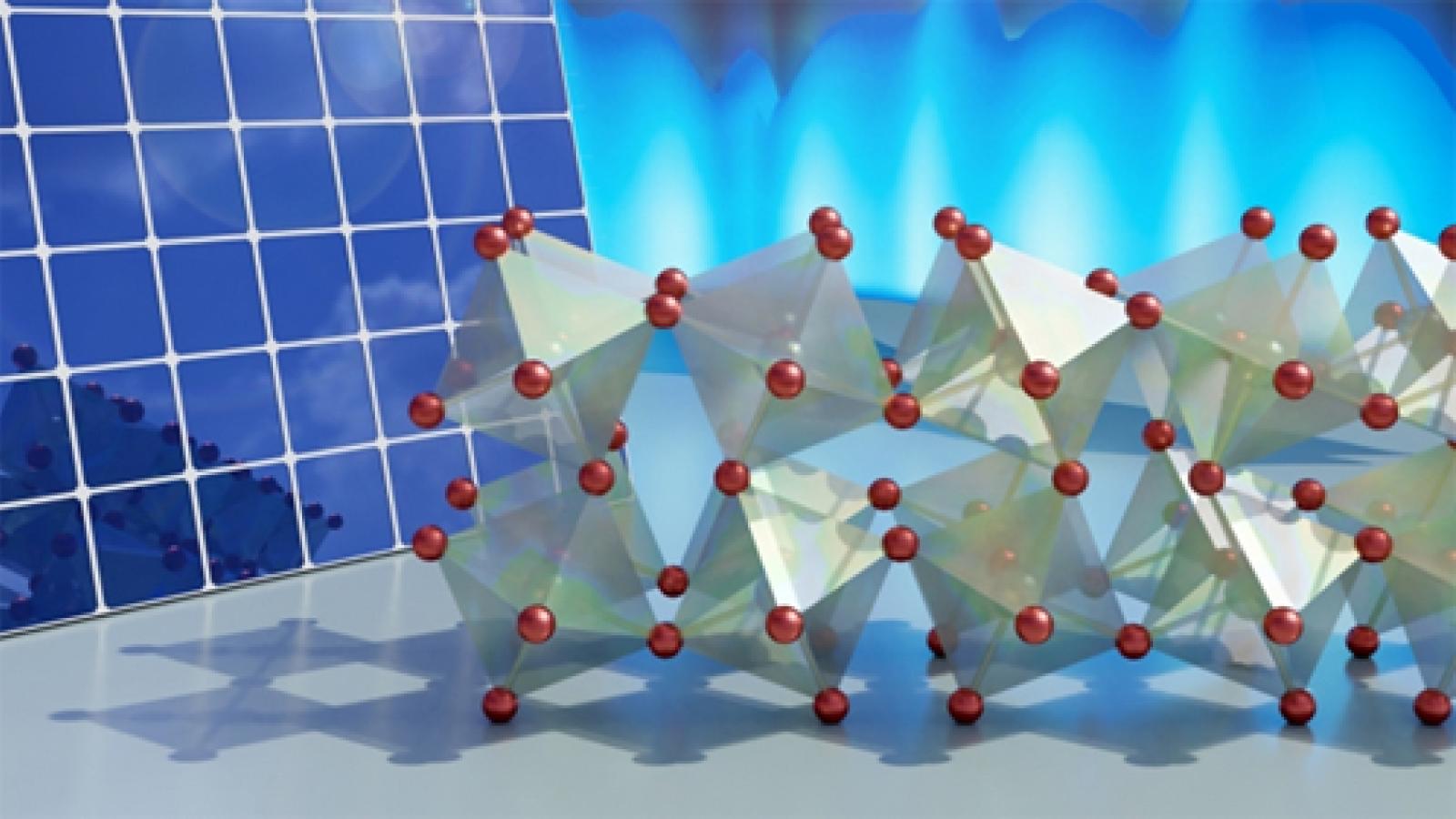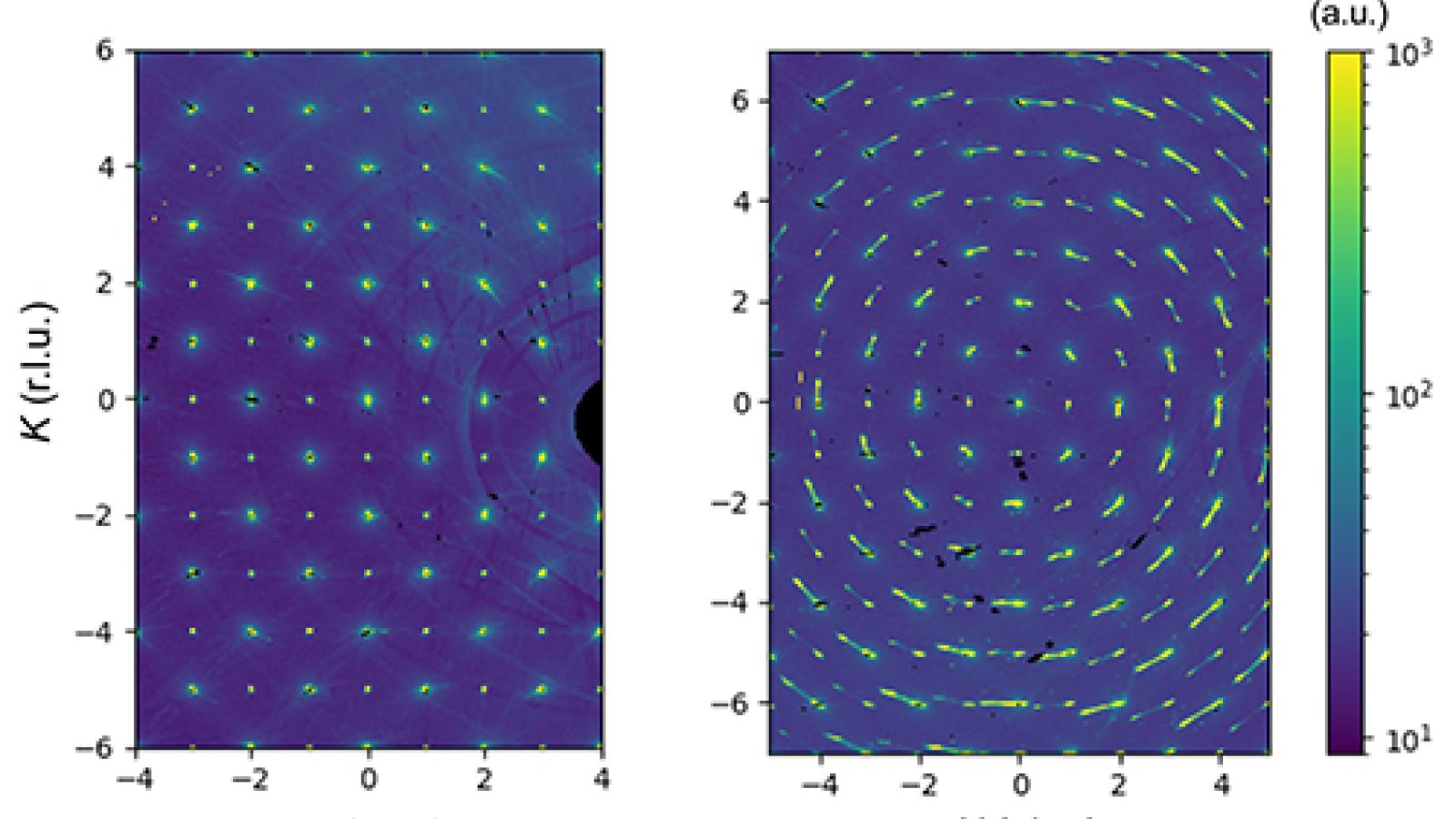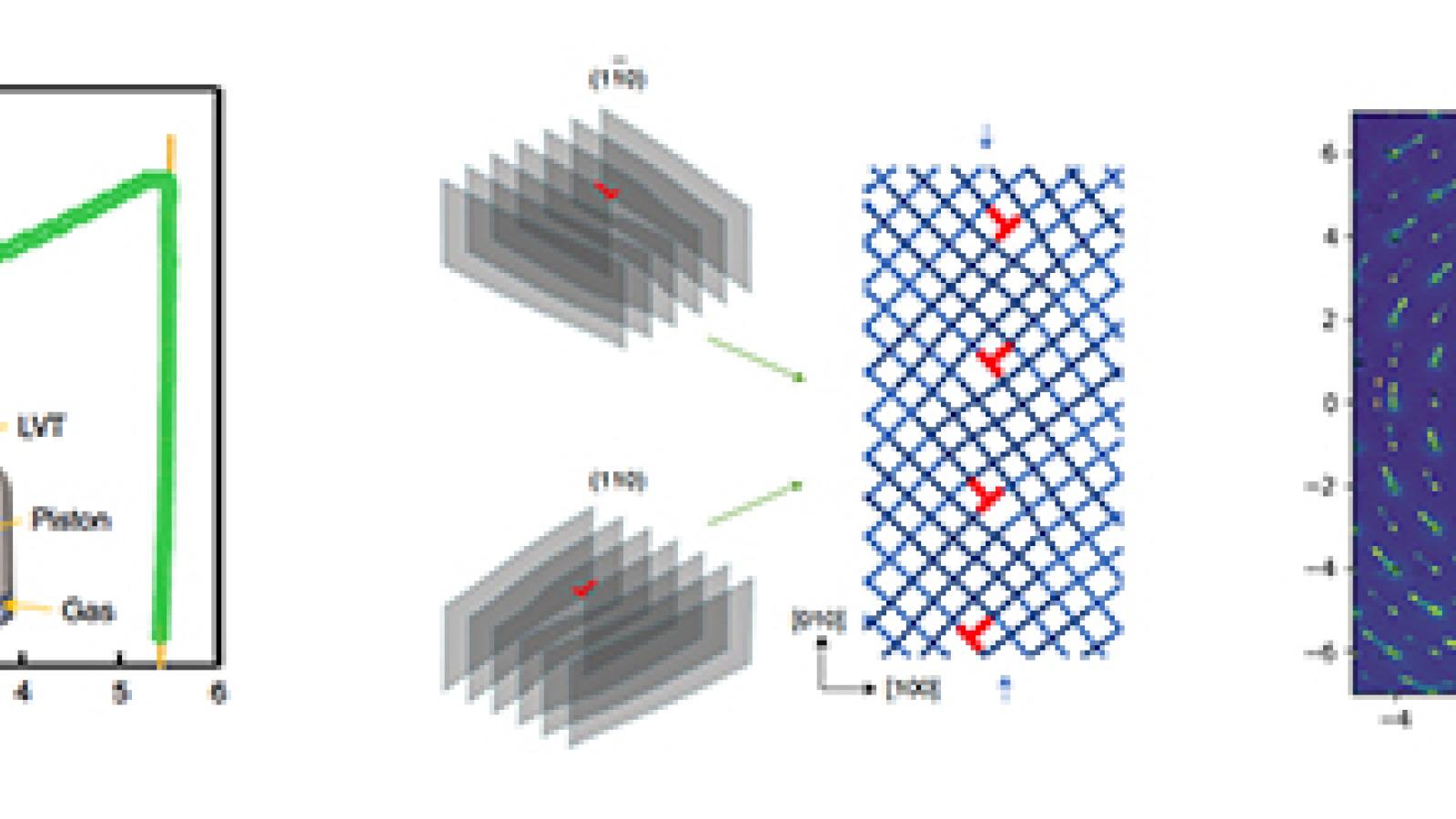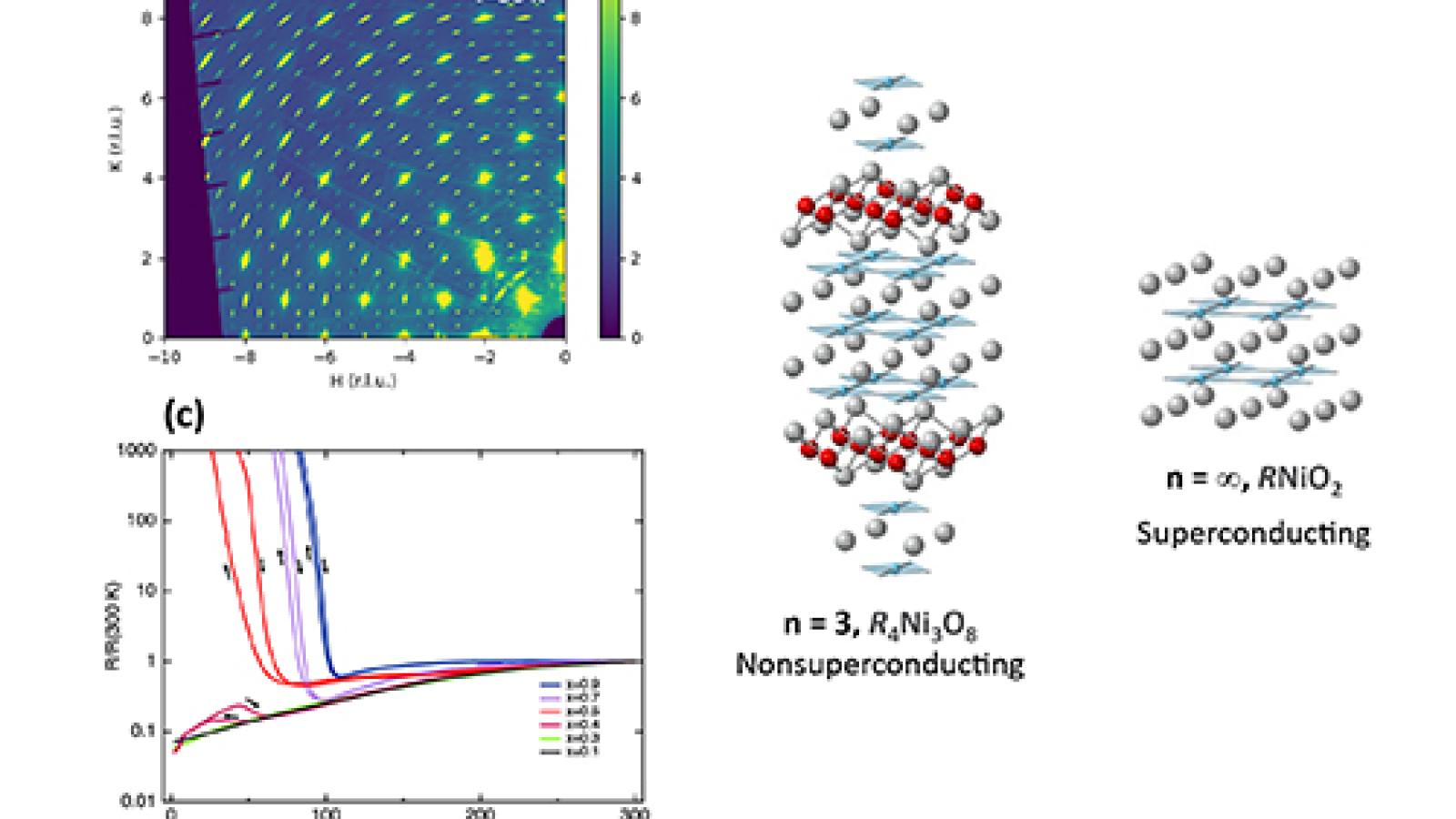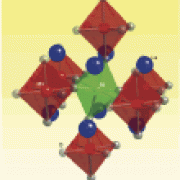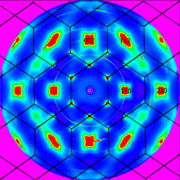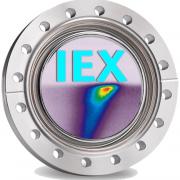09.20.2021
Taking Lessons from a Sea Slug, Study Points to Better Hardware for Artificial Intelligence: A new study by researchers who carried out experiments at the U.S. Department of Energy’s Advanced Photo...
29-ID-C,D, 33-ID-D,E
01.23.2023
Understanding SrTiO3’s Dual Role as an Insulator and Conductor: Researchers used the U.S. Department of Energy’s Advanced Photon Source to perform a variety of studies using an array of synchrotr...
29-ID-C,D, 33-ID-D,E
03.26.2024
Quantum materials are increasingly being explored for their exotic properties. One phenomenon called an electronic flat band can occur in quantum materials with just the right geometric structure. The...
29-ID-C,D
06.08.2015
Researchers used x-ray photoemission spectroscopy (XPS) at beamline 4-ID-C to show that electrons that are spin-polarized by traversing chiral DNA can lead to chiral selective chemistry. This is manif...
4-ID-C
11.20.2015
Researchers used single crystal XMCD measurements at beamlines 4-ID-C and 4-ID-D to show presence of itinerant ferromagnetism (Tc ~ 100 K) in the As 4p band of K-doped BaMn2As2 which is not associated...
4-ID-C, 4-ID-D
05.13.2016
Researchers used XAS/XMCD measurements at 4-ID-C to probe the interface between a topological insulator and a magnetic materials with an eye at enabling advanced electronic devices including quantum c...
4-ID-C
01.07.2019
Tiny, disordered particles of magnesium chromium oxide may hold the key to new magnesium battery energy storage technology, which could possess increased capacity compared to conventional lithium-ion ...
4-ID-C, 10-BM-A,B, 11-ID-B
07.22.2019
The recent application of x-ray magnetic circular dichroism spectroscopy at the U.S. Department of Energy’s Advanced Photon Source has provided an answer to a hypothesis first proposed in 2014 regar...
4-ID-C
10.16.2019
The revolutionary tech discoveries of the next few decades, the ones that will change daily life, may come from new materials so small they make nanomaterials look like lumpy behemoths....
4-ID-C, 33-ID-D,E
11.12.2020
Researchers at Michigan Technical University using high-brightness x-rays from the U.S. Department of Energy’s Advanced Photon Source have mapped a noise-reducing magneto-optical response that occur...
4-ID-C
04.08.2015
Researchers used XAS/XMCD measurements at beamline 4-ID-D to probe the spin and orbital moments, as well as spin-orbit coupling, in 5f states of Pu in ferromagnetic PuSb. While Pu 5f electrons are usu...
4-ID-D
07.23.2015
Researchers used XAS (4-ID-D) and resonant XRD (6-ID-B) to study the role of electron-lattice coupling in the metal-insulator transition (MIT) of rare-earth nickelates by controlling lattice distortio...
4-ID-D, 6-ID-B,C
04.21.2016
Researchers used resonant XRD (6-ID-B) and XAS (4-ID-D) to probe emergence of a “Polar metal” at the strained interface of an oxide heterostructure in an attempt to accelerate discovery of multifu...
4-ID-D, 6-ID-B,C
05.27.2016
Researchers used XRD (6-ID-B) and XAS/XMCD (4-ID-D) techniques to probe the effects of dimensional confinement in manganite/iridate superlattices with an eye at enabling all-oxide spintronics...
4-ID-D, 6-ID-B,C
10.17.2016
Single crystal magnetic diffraction measurements at 4-ID-D were used to investigate the magnetic characteristics of a helical spin-order phase preceding a recently discovered pressure-induced supercon...
4-ID-D
10.23.2017
Layer by layer, University of Tennessee, Knoxville physicists are exploring the frontiers of tuning material properties down to the atomic level. Experimenting with the stacking pattern of superlattic...
4-ID-D, 6-ID-B,C
12.06.2017
Actinides are a series of chemical elements that form the basis of nuclear fission technology, finding applications in strategic areas such as power generation, space exploration, diagnostics and medi...
4-ID-D
01.29.2018
A team of researchers used a combination of high-resolution structural imaging, magnetic domain imaging, and dichroic spectroscopy on three separate x-ray beamlines at the U.S. Department of Energy’...
4-ID-D, 26-ID-C
03.02.2018
Two-dimensional (2-D) crystalline films often exhibit interesting physical characteristics, such as unusual magnetic or electric properties. By layering together distinct crystalline thin films, a so-...
4-ID-D, 6-ID-B,C
04.27.2018
A new material created by Oregon State University researchers and characterized with help from the U.S. Department of Energy’s Advanced Photon Source and Oak Ridge National Laboratory is a key step ...
4-ID-D
06.11.2018
Sometimes a good theory just needs the right materials to make it work. That’s the case with recent findings by University of Tennessee, Knoxville’s physicists and their colleagues, who designed a...
4-ID-D, 6-ID-B,C, 33-BM-C
02.08.2019
Jarosite, a hydrous sulfate mineral exhibiting unusual magnetic behavior, has intrigued scientists in a range of fields from planetary science to inorganic chemistry. Interactions between iron ions in...
4-ID-D, 13-BM-C, 16-ID-B
04.13.2021
Some New and Unexpected Wrinkles in a Spin-Triplet Superconductor Under Pressure: The quest for novel superconducting materials can lead to unexpected places, such as the compound uranium ditelluride...
4-ID-D
02.28.2022
Magnetic-like Vortices and Cycloids Observed in a Ferroelectric Material: Under the right conditions, some ferromagnetic compounds can generate magnetic whirlpools, spirals, and a special type of mag...
4-ID-D
06.21.2022
Understanding the Flow of Spin Currents Across Interfaces: Researchers trying to make smaller, faster computer processors and other devices have for some time been looking to spintronics. . To advanc...
4-ID-D
06.10.2015
Researchers used resonant magnetic scattering measurements at beamline 6-ID-B to probe magnetic ordering in Na2IrO3, a material where anisotropic exchange (Kitaev) interactions dominate over isotropic...
6-ID-B,C
07.16.2015
Researchers used x-ray resonant scattering measurements at 6-ID-B to probe the collapse of magnetic ordering in Mott insulator iridate Sr3Ir2O7 as electrons are doped with La doping at the Sr site. Th...
6-ID-B,C
01.25.2018
Sometimes a little frustration and disorder can be a good thing, at least in the quest for the elusive and exotic state of matter known as a quantum spin liquid (QSL). In such systems, the electrons ...
6-ID-B,C
04.28.2020
A multi-national team of researchers using the U.S. Department of Energy’s APS probed the magnetic and crystalline properties of two superlattices and described magnetic tunability that should prove...
6-ID-B,C, 27-ID-B, 33-BM-C
01.25.2021
A New One-Step Process for Creating Self-Assembled Metamaterials: Based in large part on experiments carried out at the U.S. Department of Energy’s Advanced Photon Source, researchers show the reali...
6-ID-B,C
02.08.2021
Direct Observation of Piezomagnetic Domains in Uranium Dioxide: Only a few crystalline compounds are known to exhibit the rare phenomenon of piezomagnetism. Research at the U.S. Department of Energy'...
6-ID-B,C, 16-BM-D
05.24.2021
Using Strain to Control an Iron-Based, High-Temperature Superconductor: Experiments at the U.S. Department of Energy’s Advanced Photon Source demonstrated the capability to dramatically promote or ...
6-ID-B,C
01.26.2016
Researchers used high energy XRD at beamline 6-ID-D, coupled with aerodynamic levitation, to study the liquid/solid transition of high-entropy alloys with an eye at enabling new generation materials w...
6-ID-D
08.31.2016
Researchers used high energy diffraction measurements of aerodynamically-levitated, glass-forming liquids at 6-ID-D to investigate the liquid and glass structures of Sodium Borate. The goal is to disc...
6-ID-D
01.24.2018
The behavior of iron at high temperatures and pressures plays an important part in our understanding of Earth's interior. Scientists must quantify how iron's physical and chemical characteristics are ...
6-ID-D, 20-BM-B
04.22.2020
By combining x-ray diffraction data from the U.S. Department of Energy’s APS with other structural data and computer modeling, researchers uncovered the secrets behind how a glass can act like a cry...
6-ID-D
10.12.2020
When Too Much Order is a Bad Thing: Pioneering x-ray methods developed by these researchers and used at the U.S. Department of Energy’s Advanced Photon Source complimented by measurements at the Cor...
6-ID-D
03.29.2021
Twisting, Flexible Crystals Key to Solar Energy Production: Long-hidden molecular dynamics that provide desirable properties for solar energy and heat energy applications to an exciting class of mate...
6-ID-D
04.16.2021
Building a Better Simulation for a Better Refractory Oxide: Properly testing refractory materials that are essential for industrial applications and processes in extreme environments is challenging, ...
6-ID-D
09.13.2021
Probing the Structure of a Promising NASICON Material: Research carried out at the U.S. Department of Energy’s Advanced Photon Source provides fresh insights into the process of homogeneous nucleat...
6-ID-D
01.11.2022
Induced Flaws in Quantum Materials Could Enhance Superconducting Properties: An international team of researchers using two U.S. Department of Energy national user facilities including the Advanced Ph...
6-ID-D
08.08.2022
Scientists studying materials that exhibit quantum properties would like to manipulate those properties to better understand them and to create useful materials, including superconductors that work at...
6-ID-D
09.19.2022
Quantum Leap: Advancing High-Temperature Superconductor Research: Researchers have discovered that nickel, a neighbor of copper on the periodic table, can also superconduct as an oxide, but so far on...
6-ID-D, 11-BM-B
08.24.2023
A group of physicists and computer scientists has developed a machine learning strategy that can extract charge density wave (CDW) – an ordered modulation of electrons – and intra-unit-cell (IUC) ...
6-ID-D


